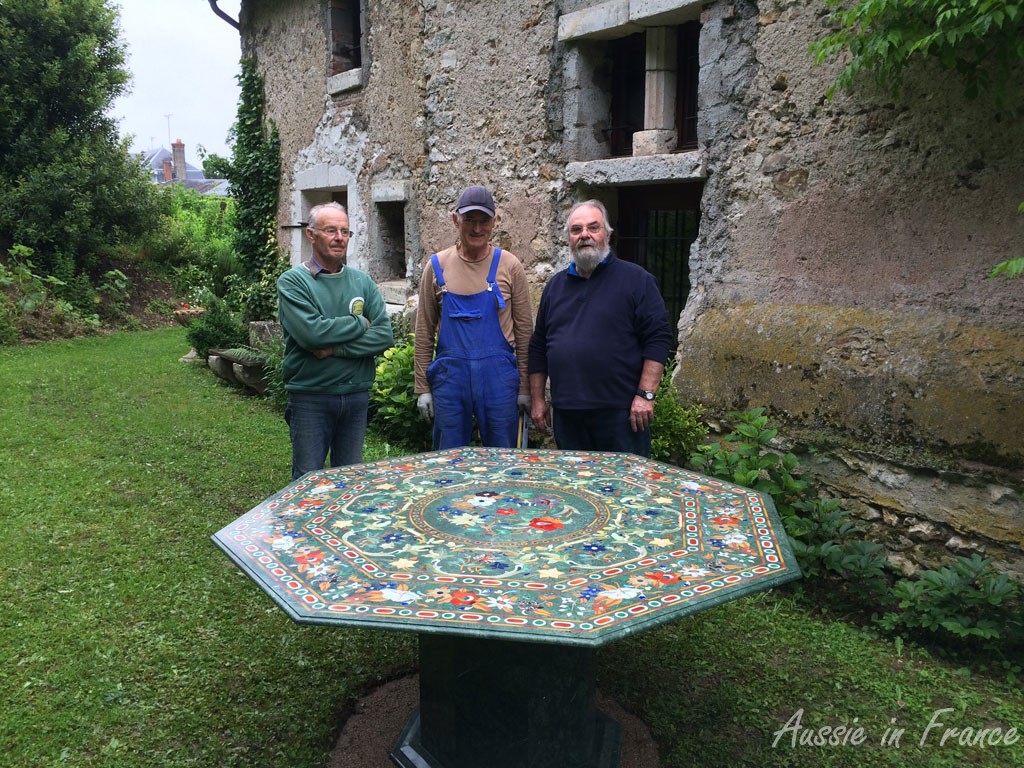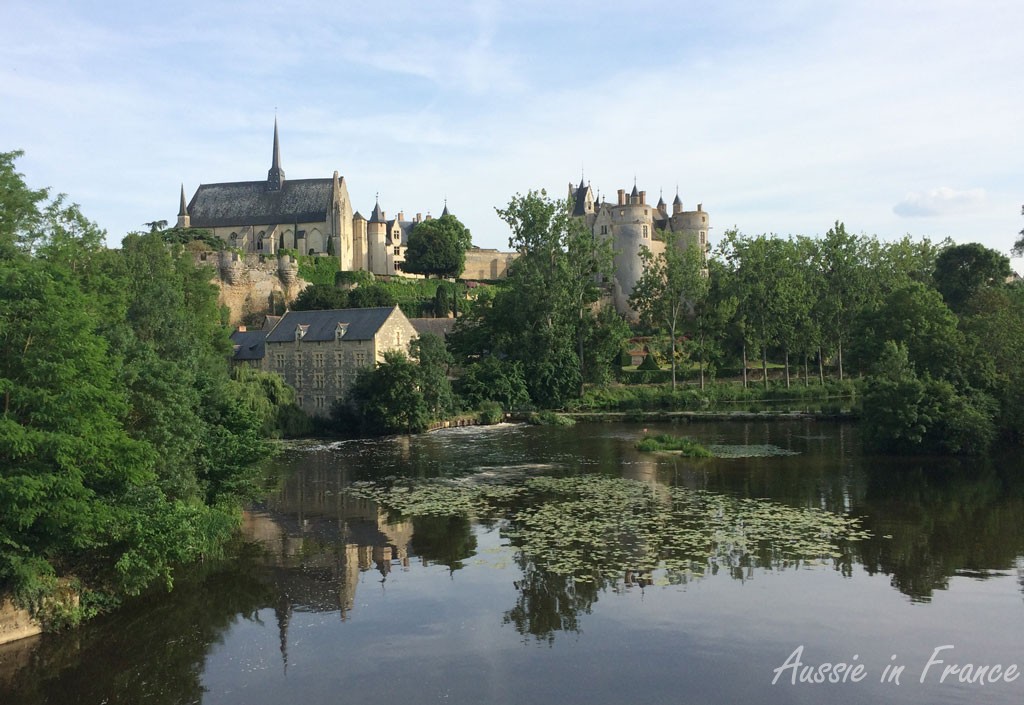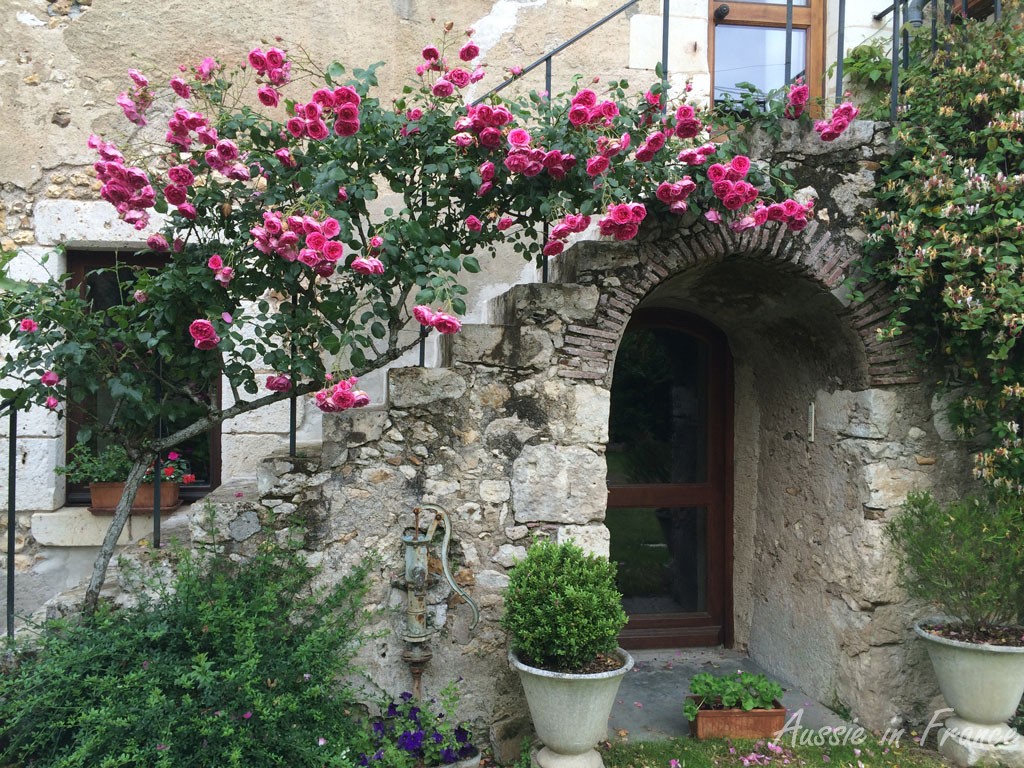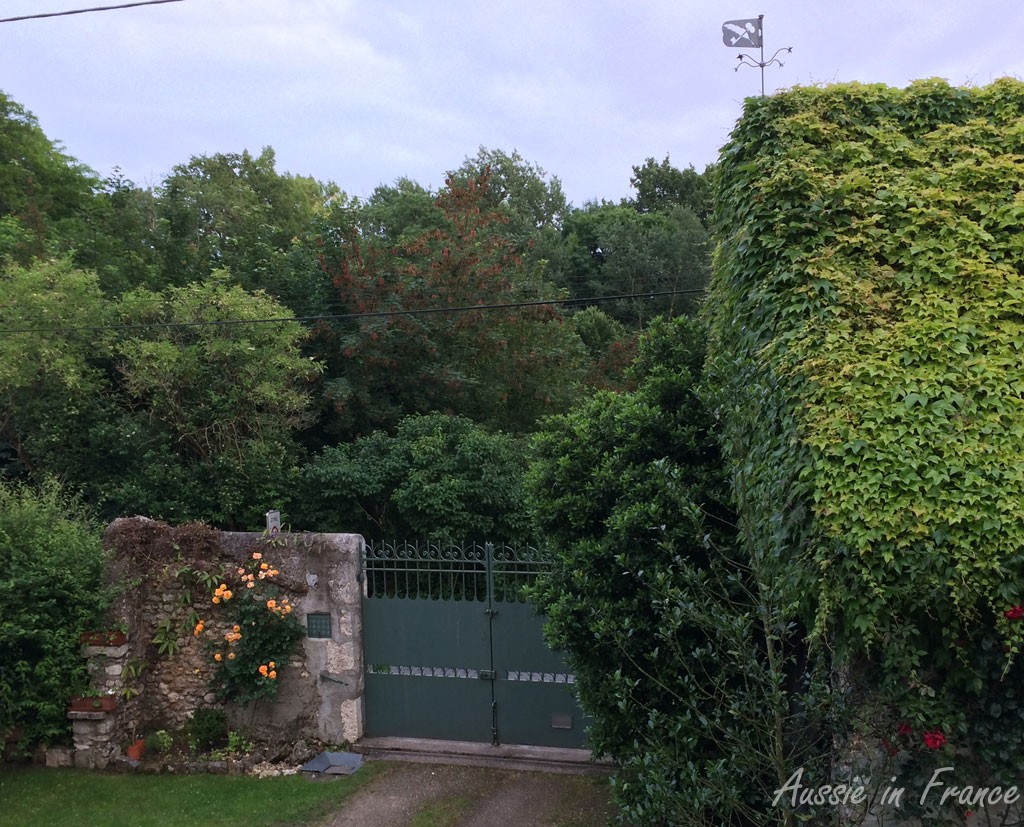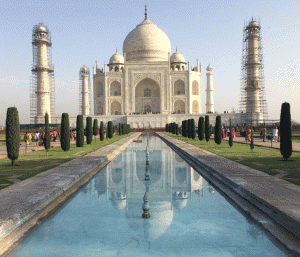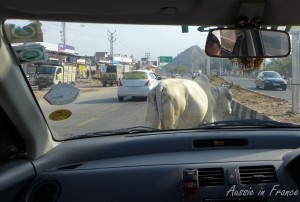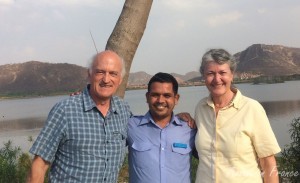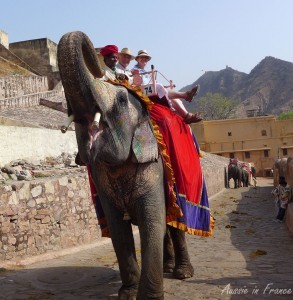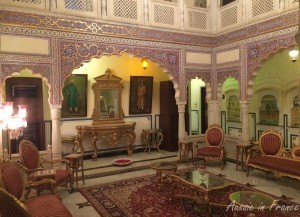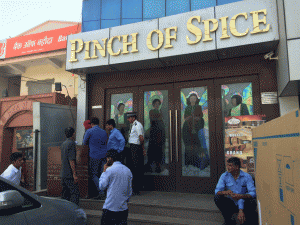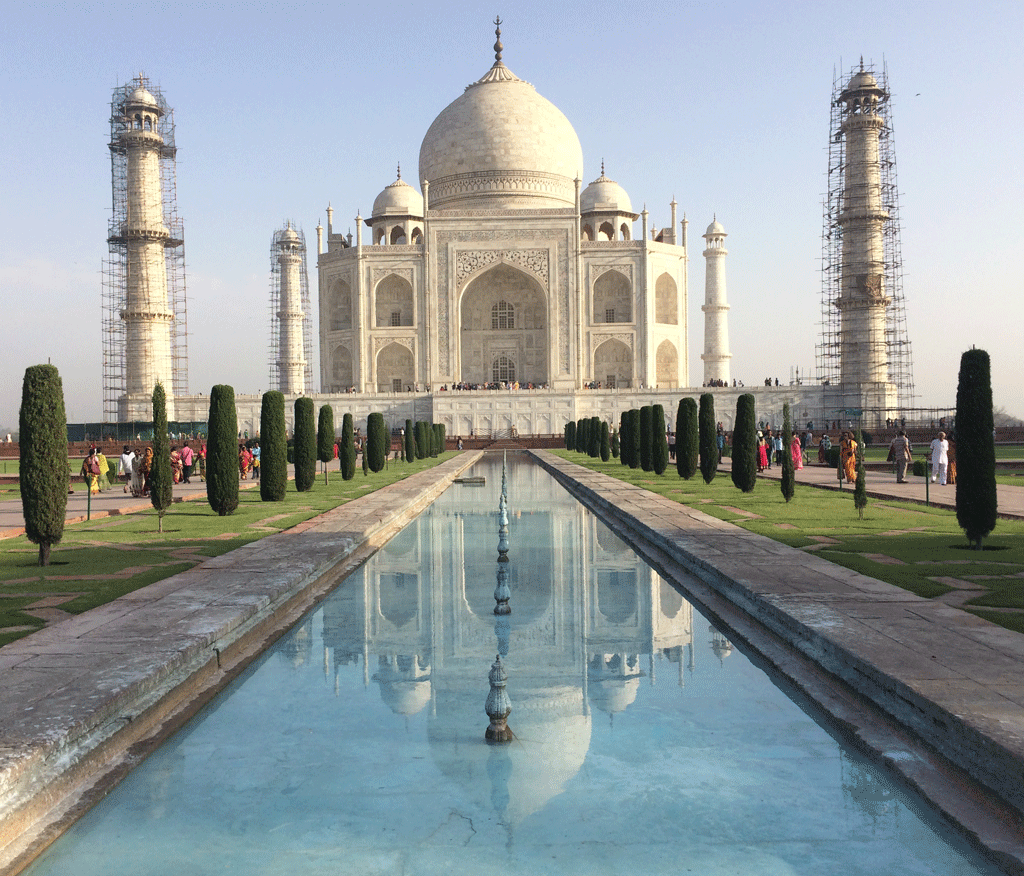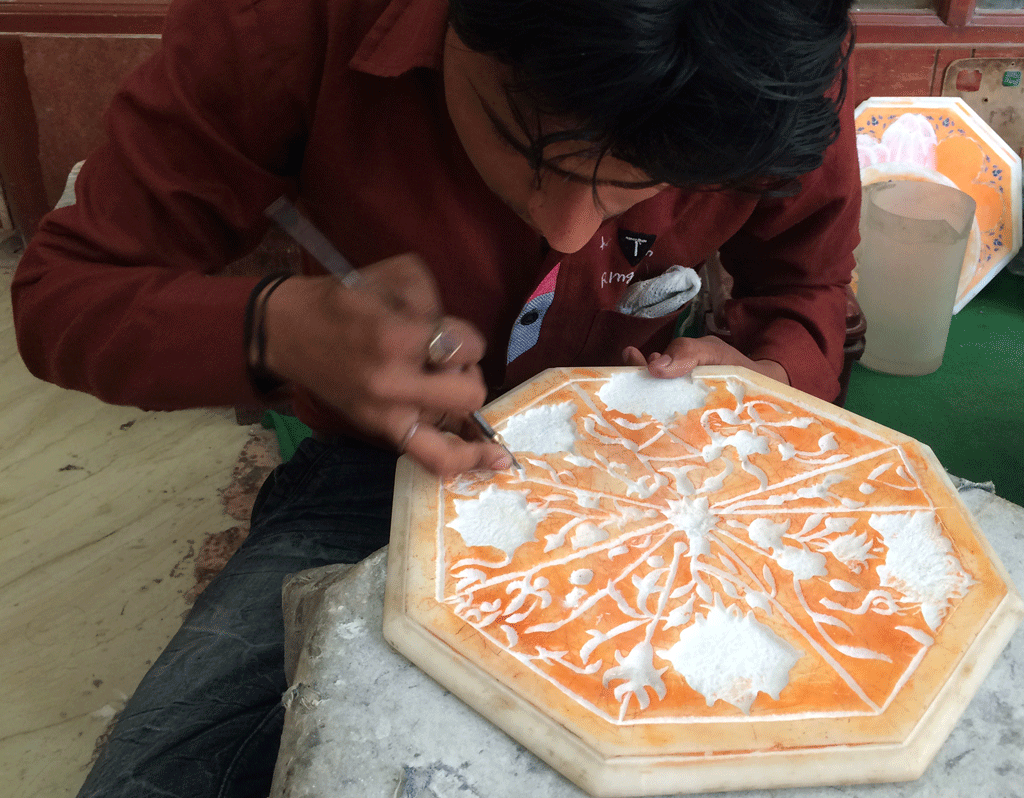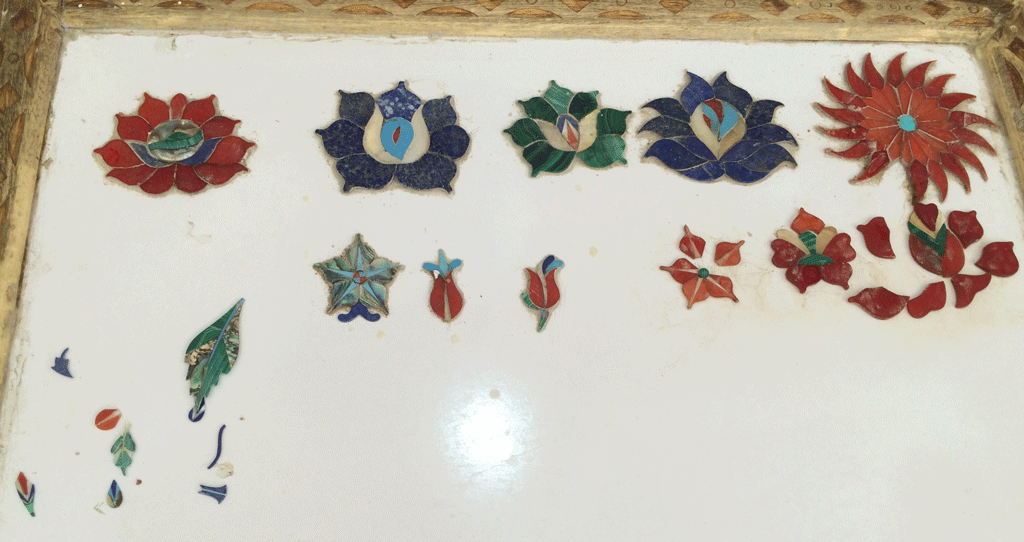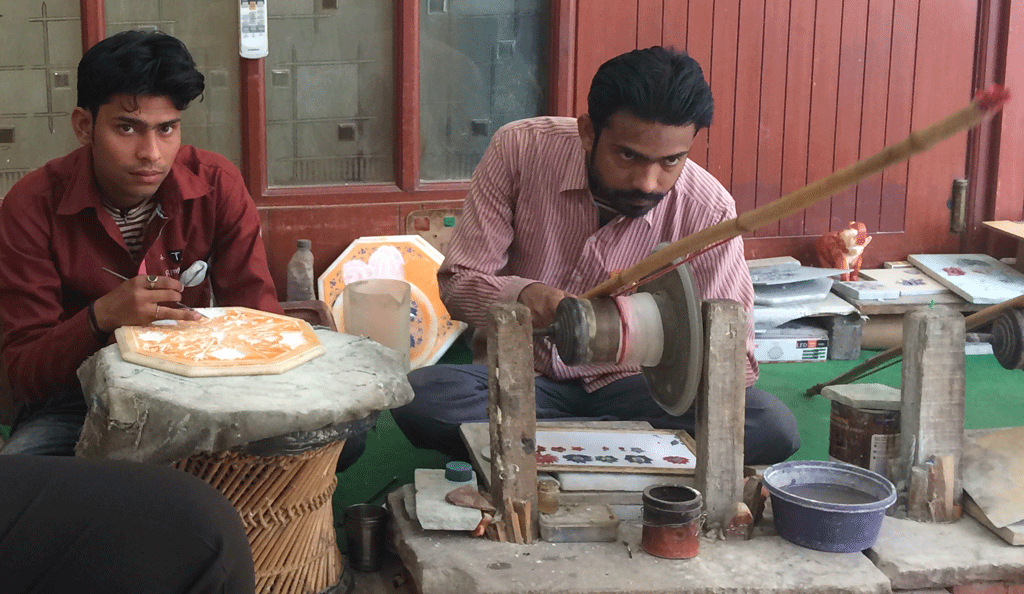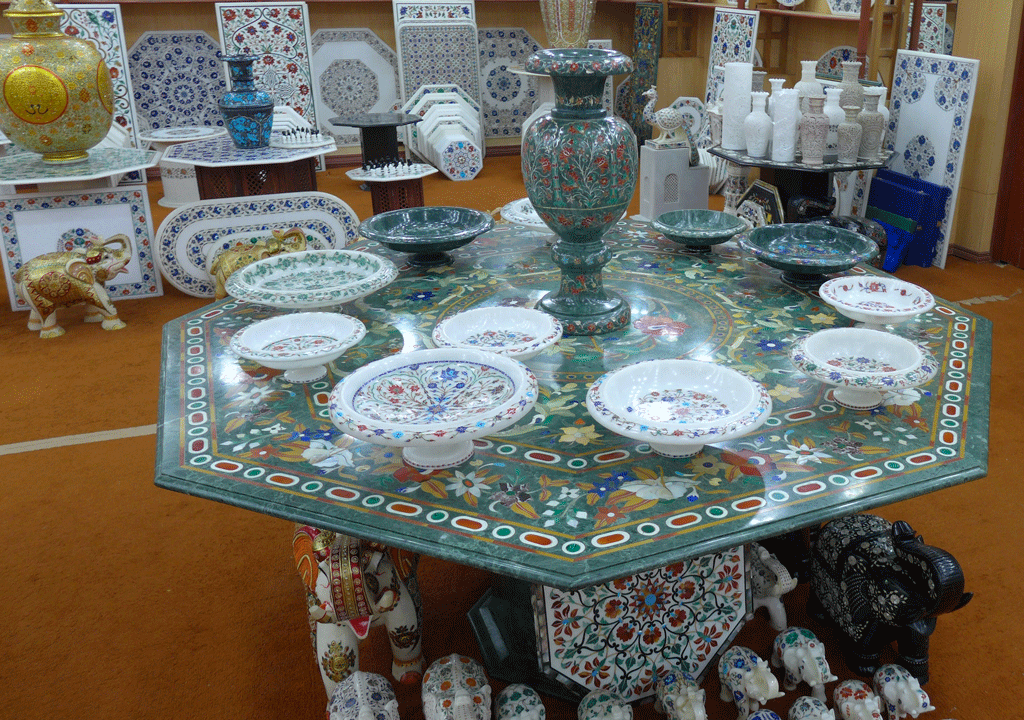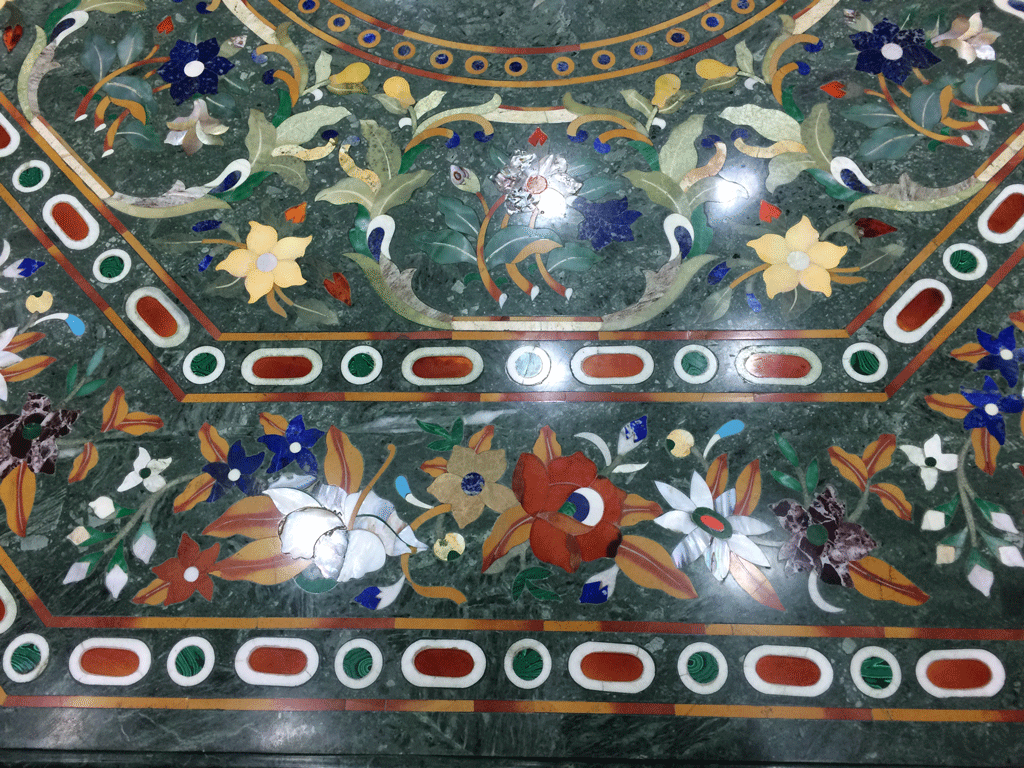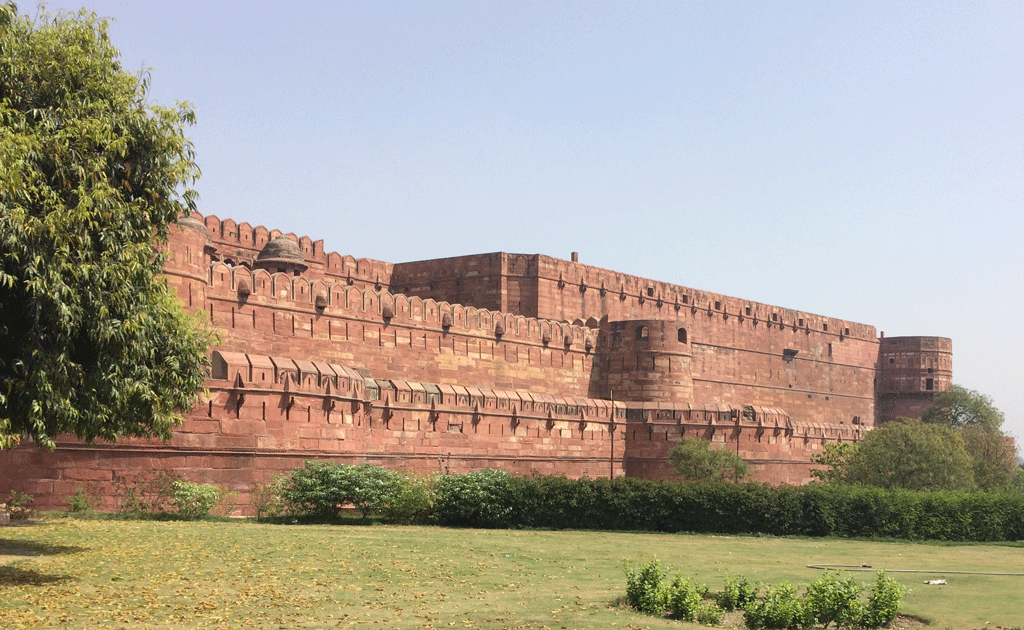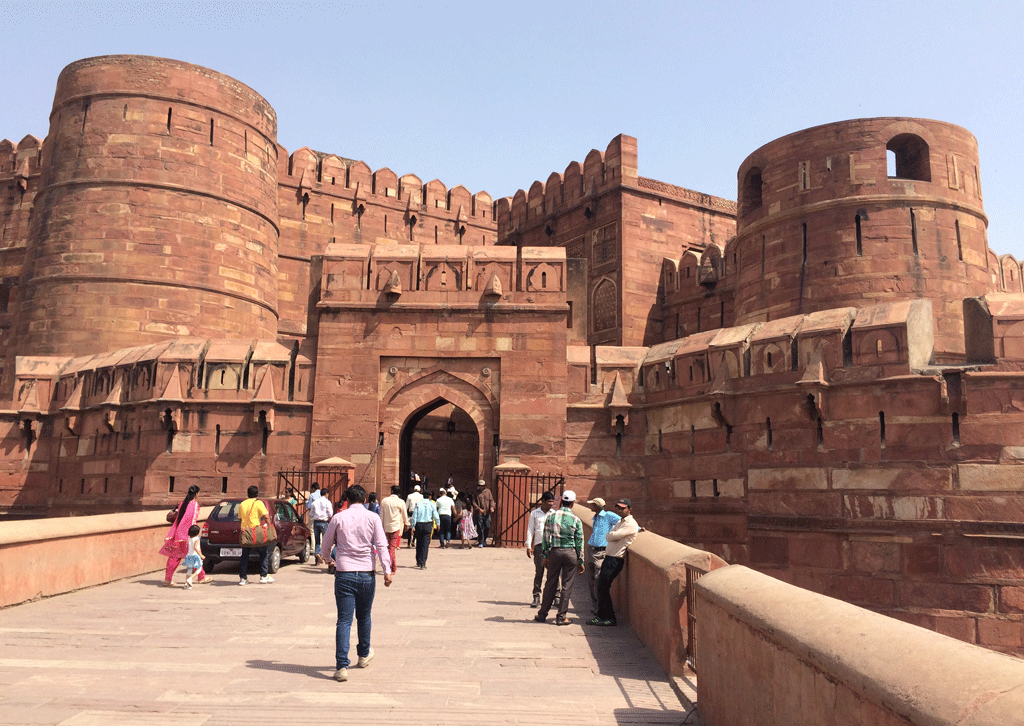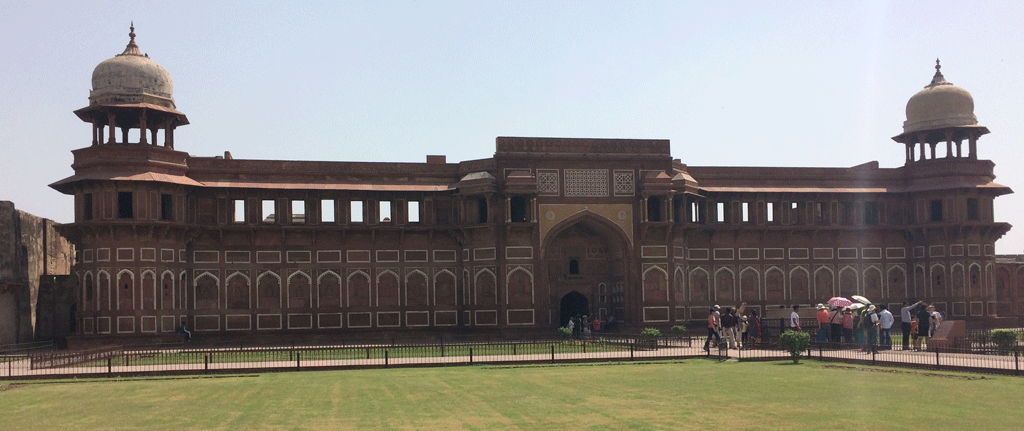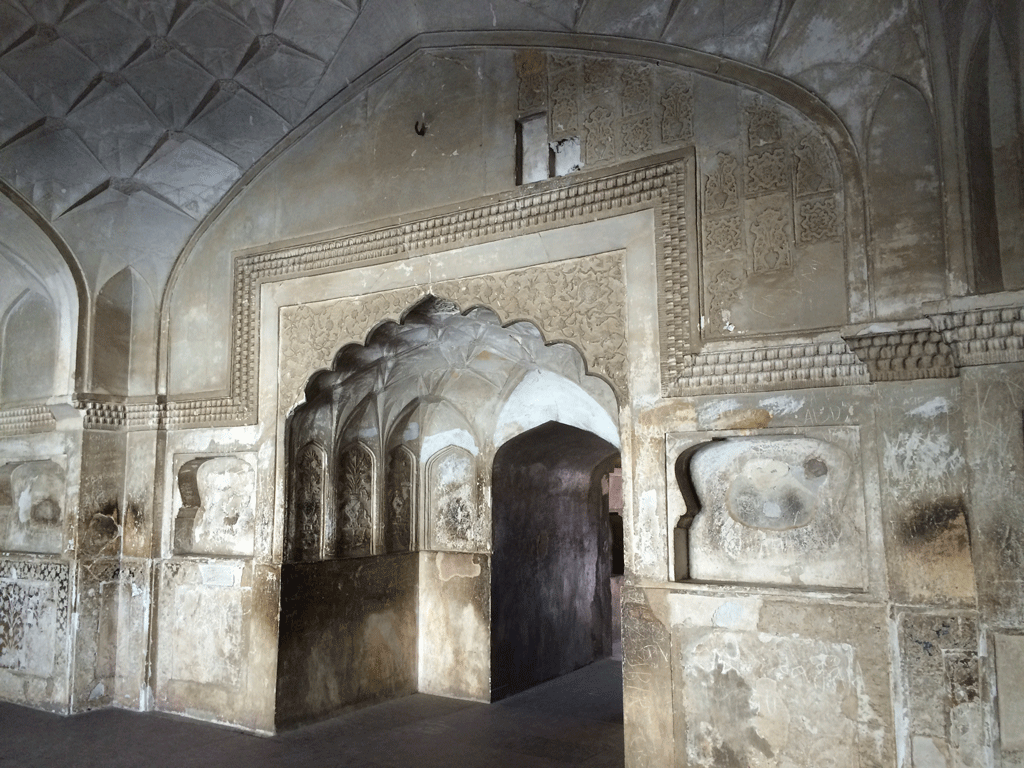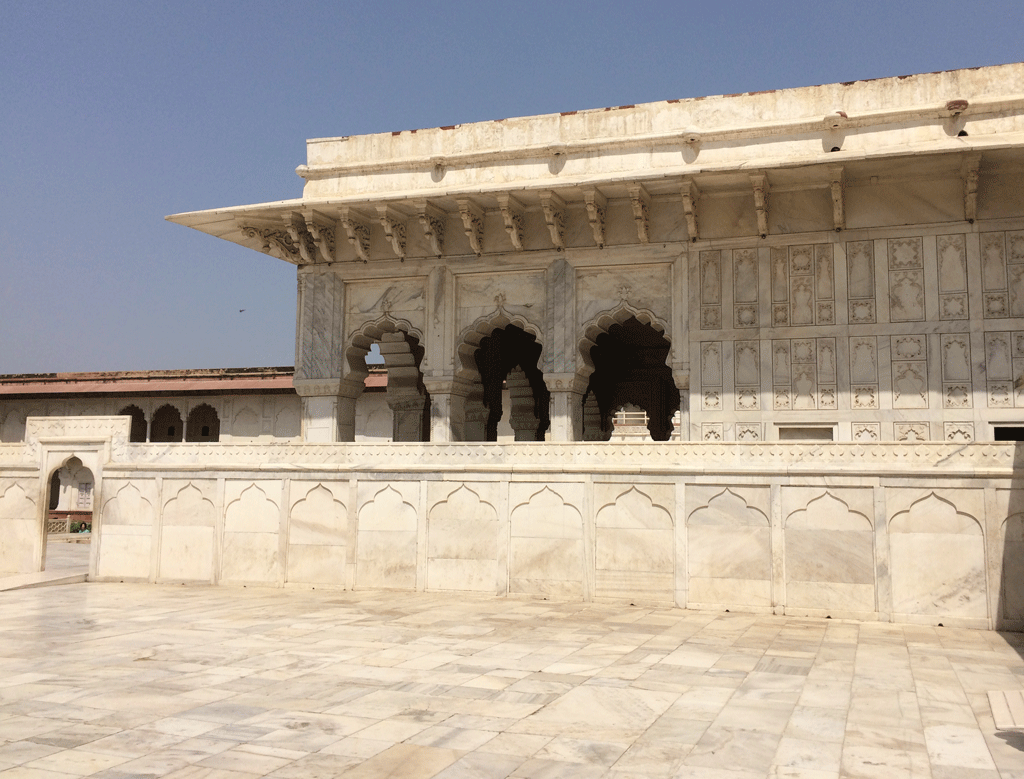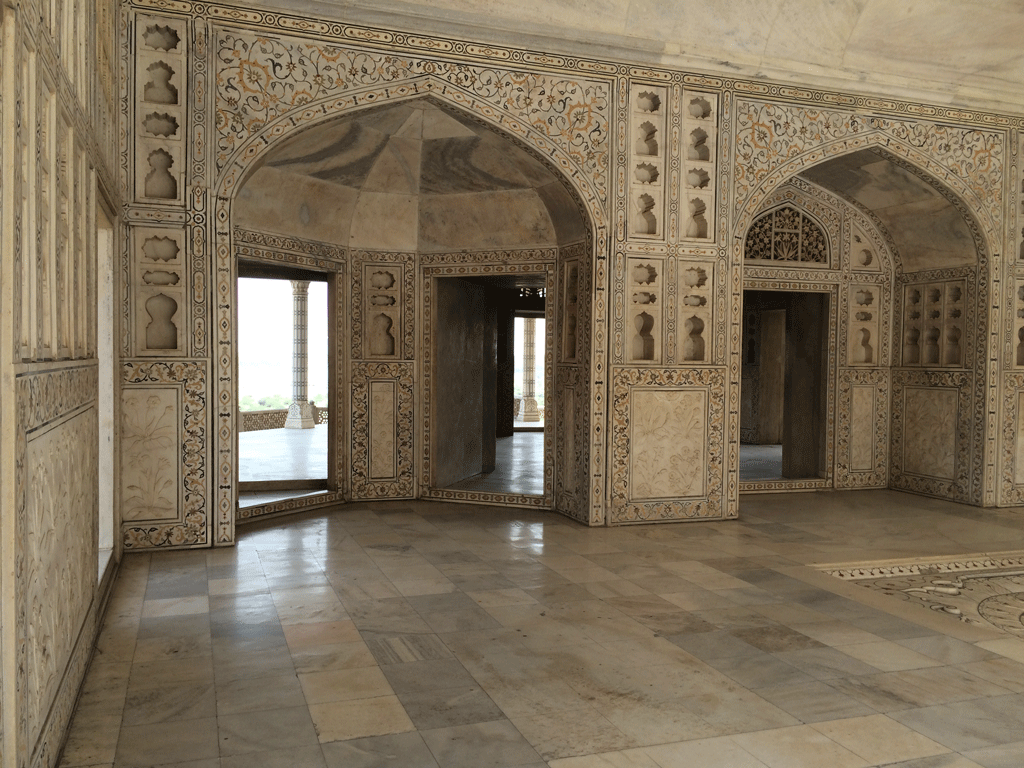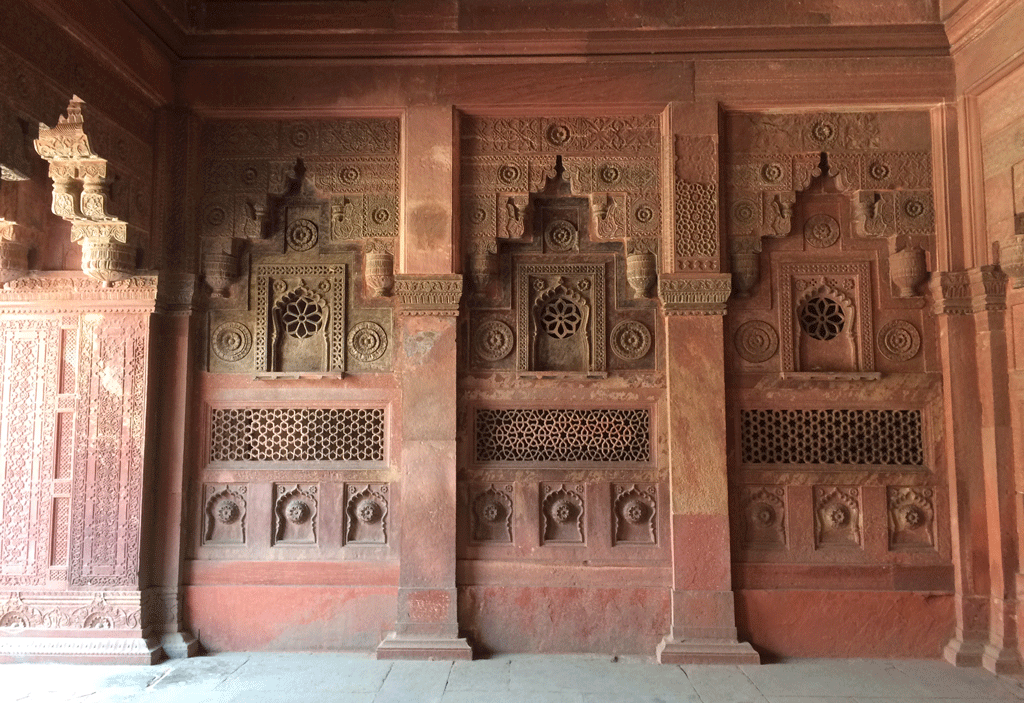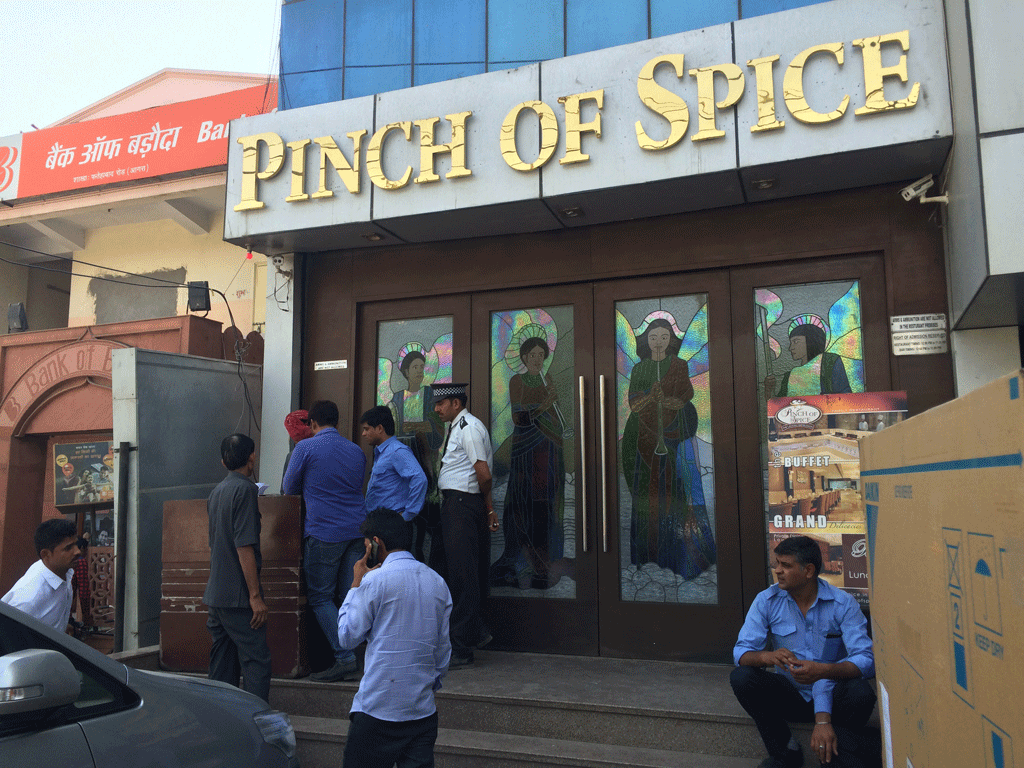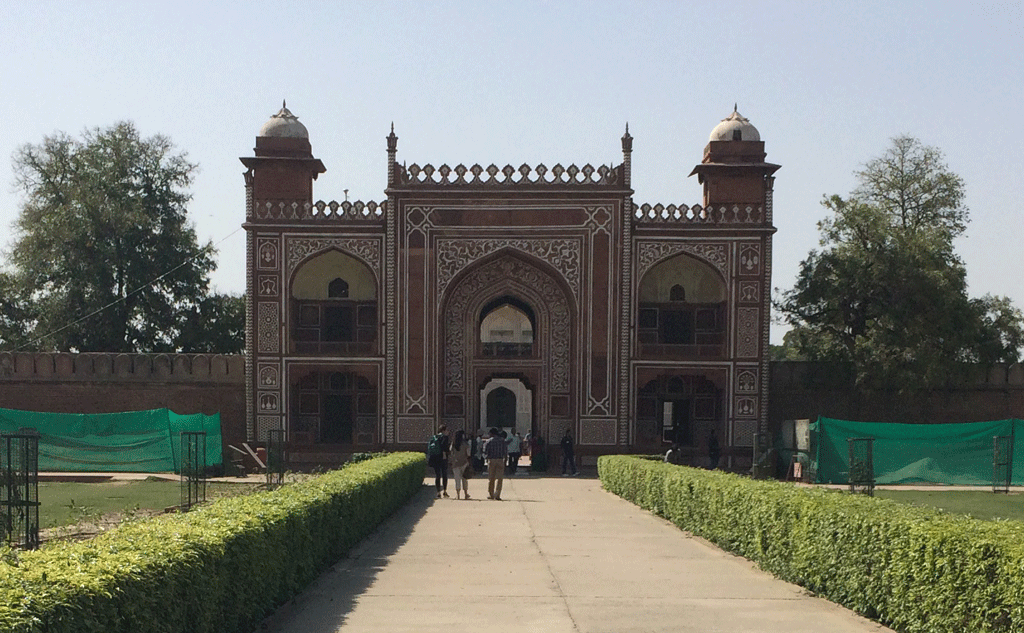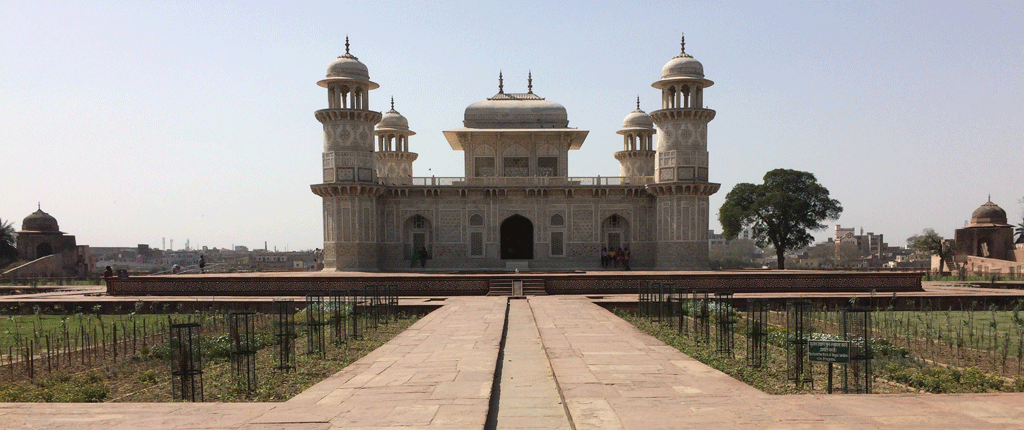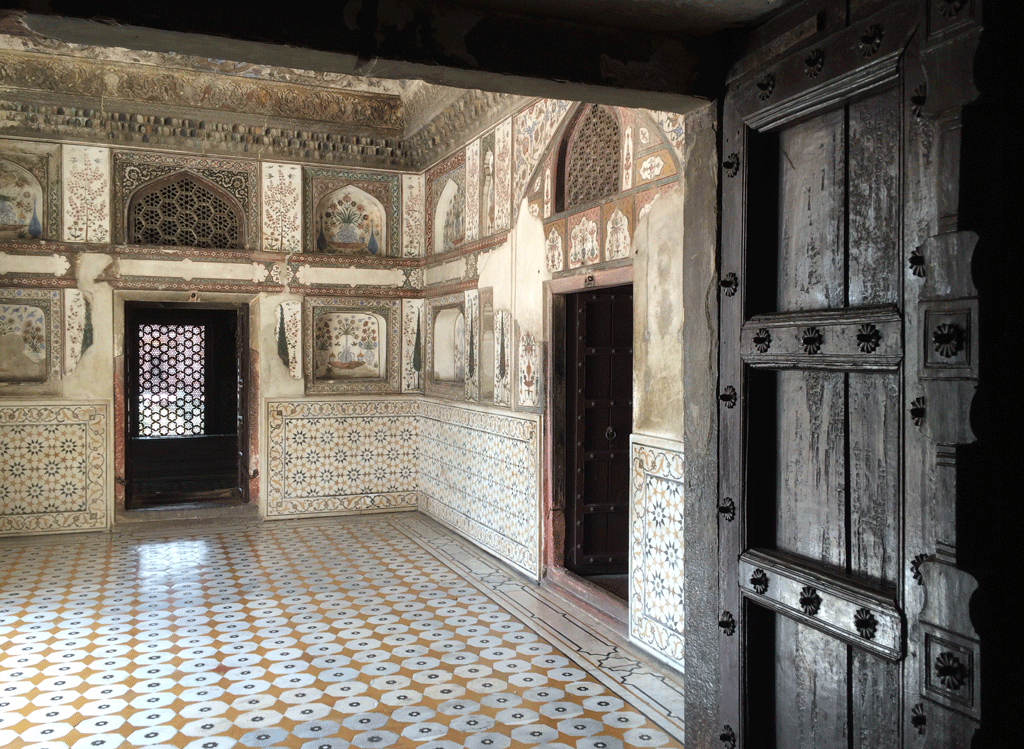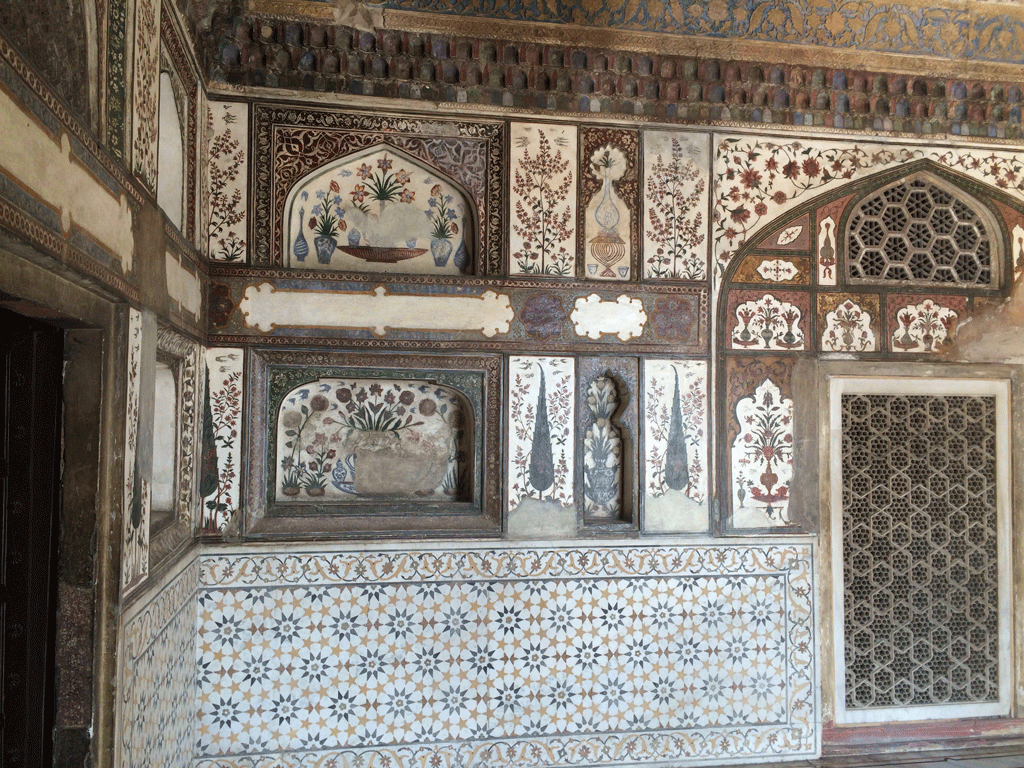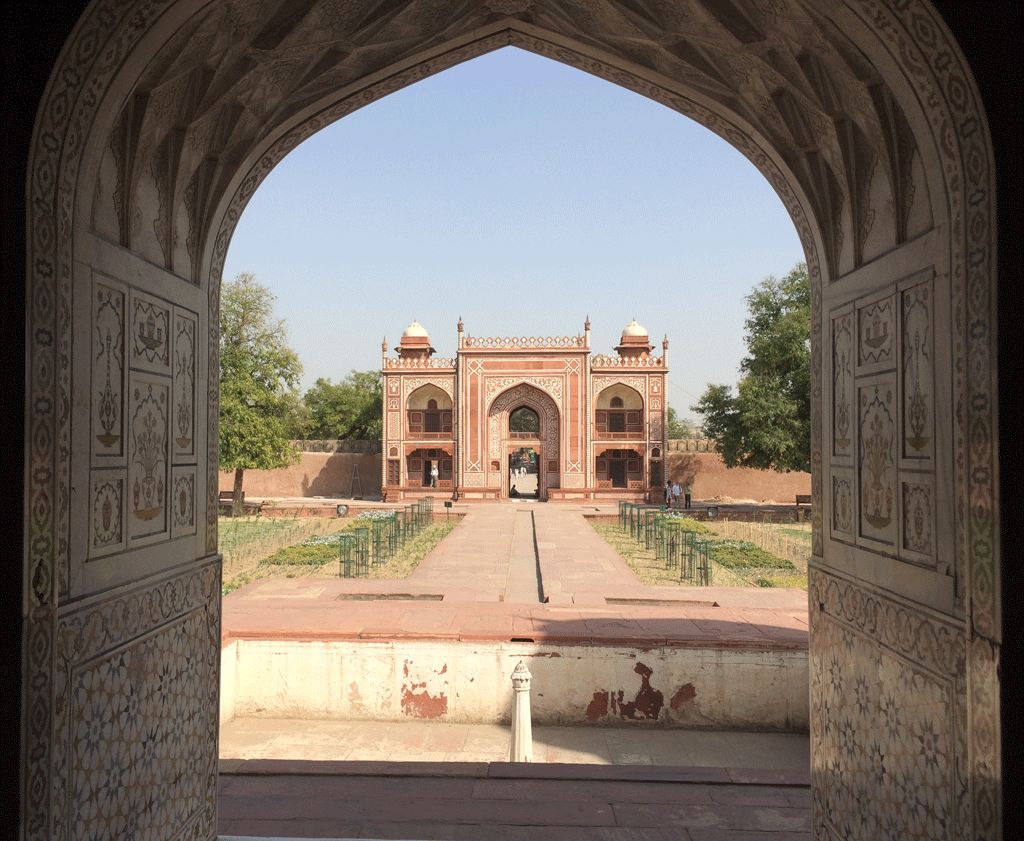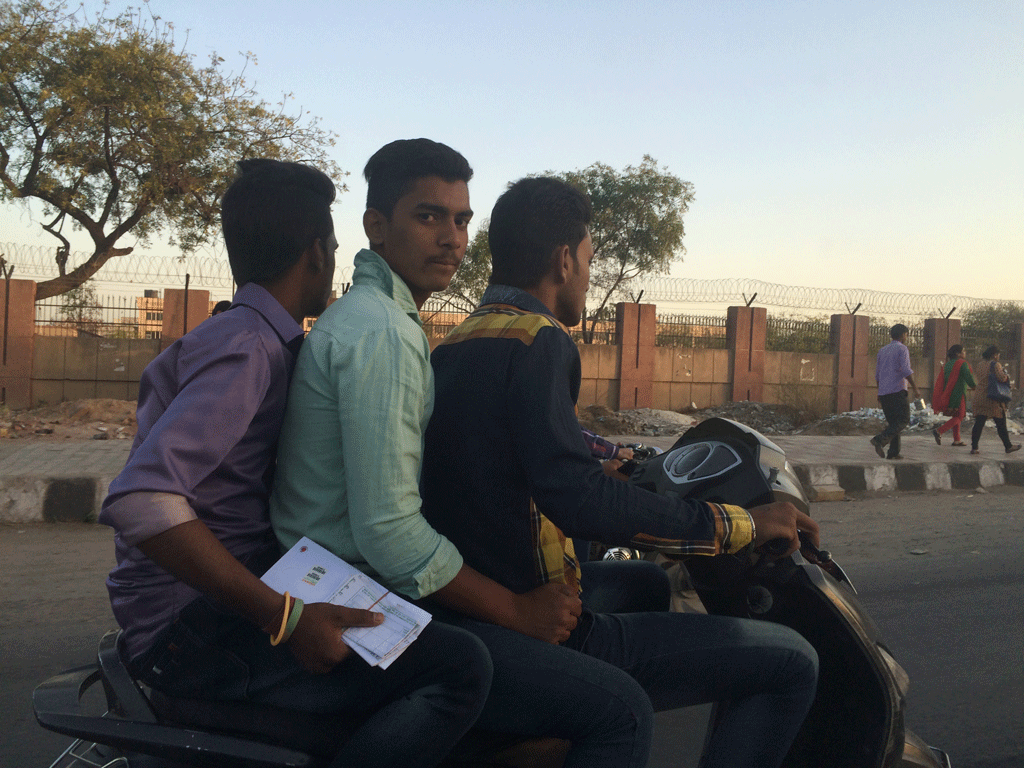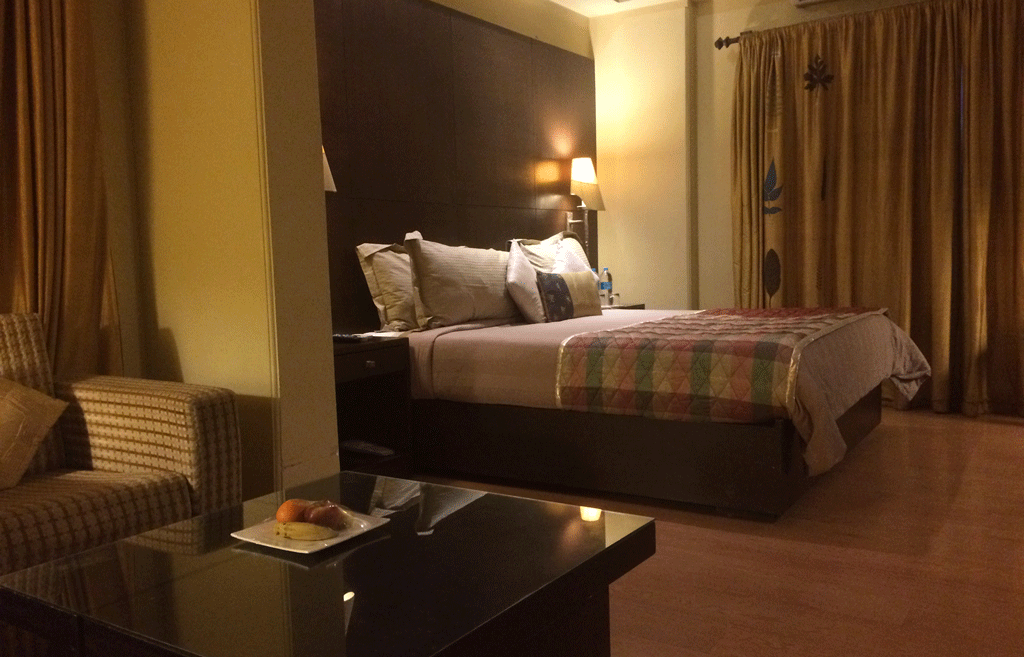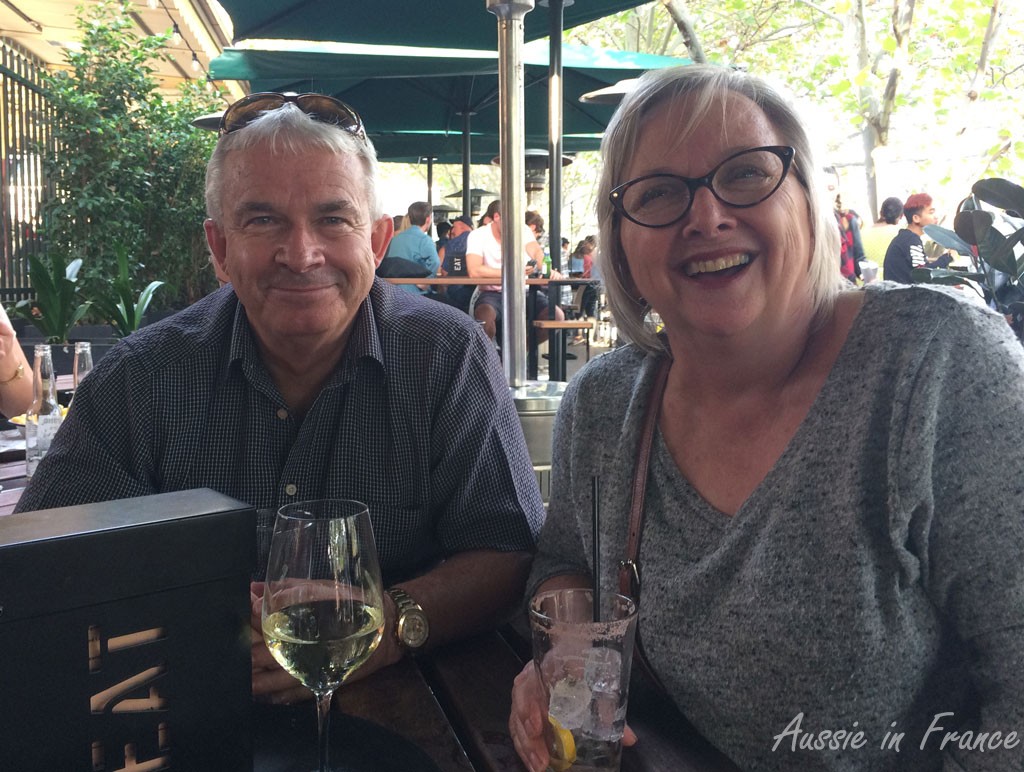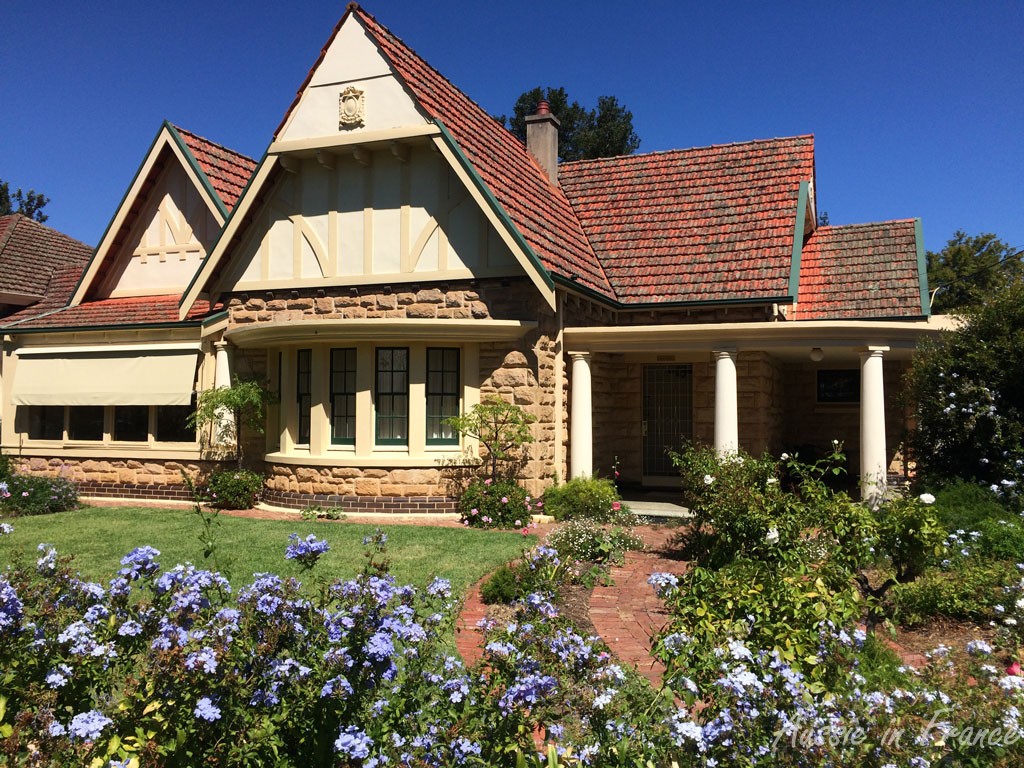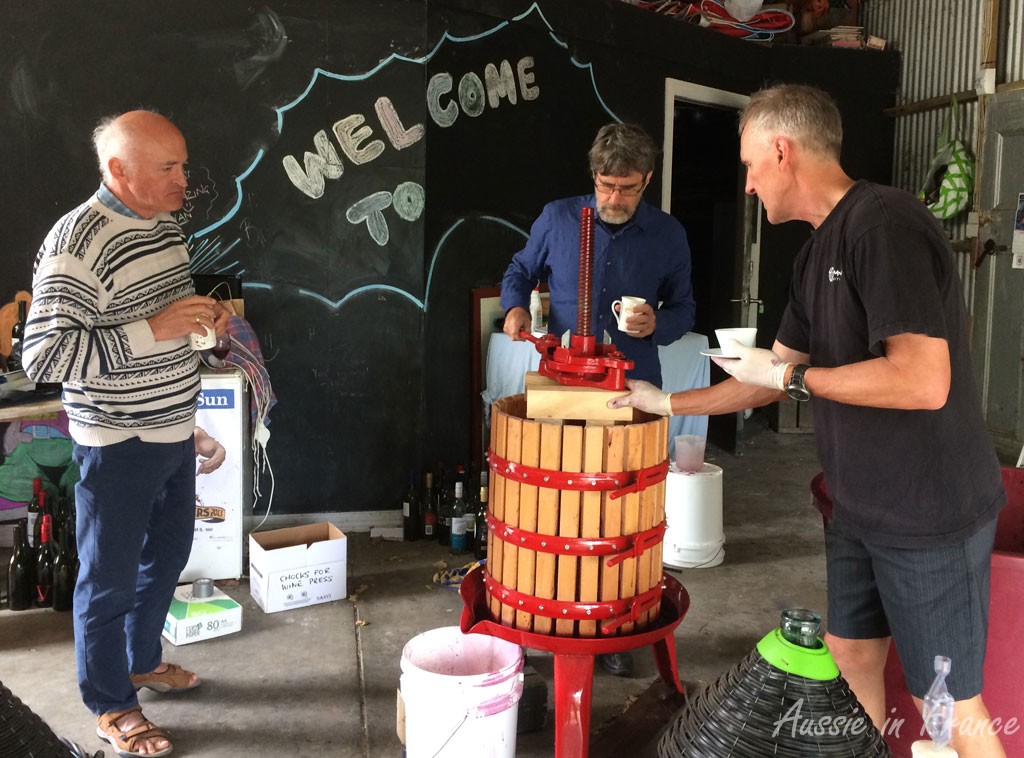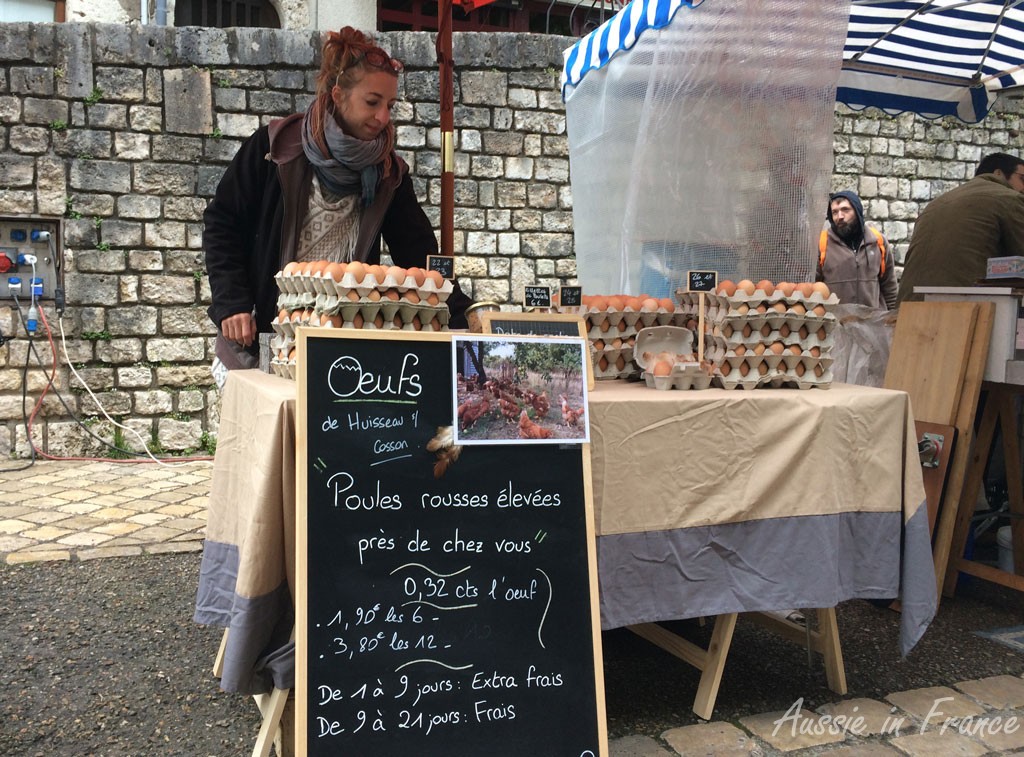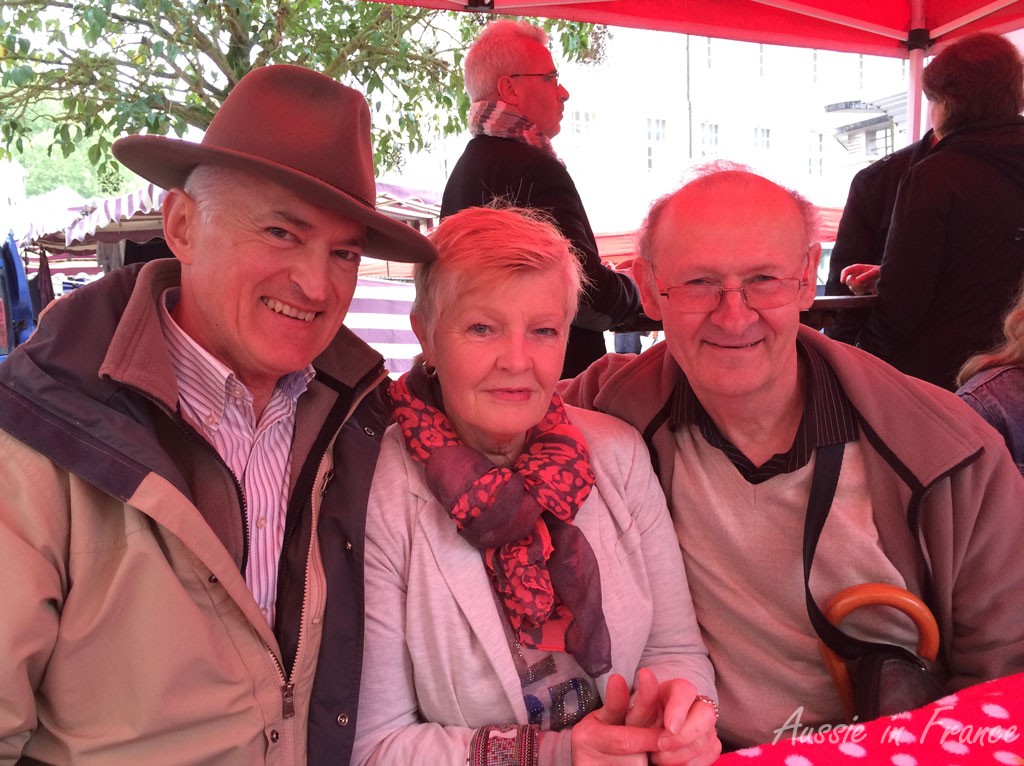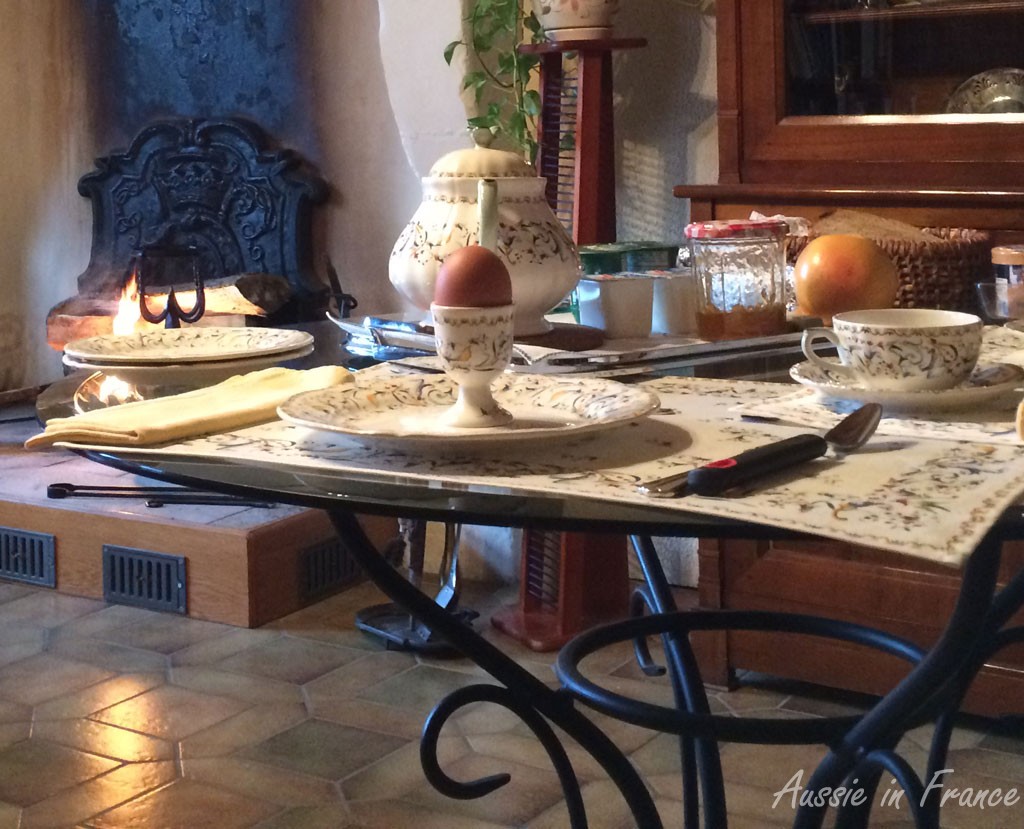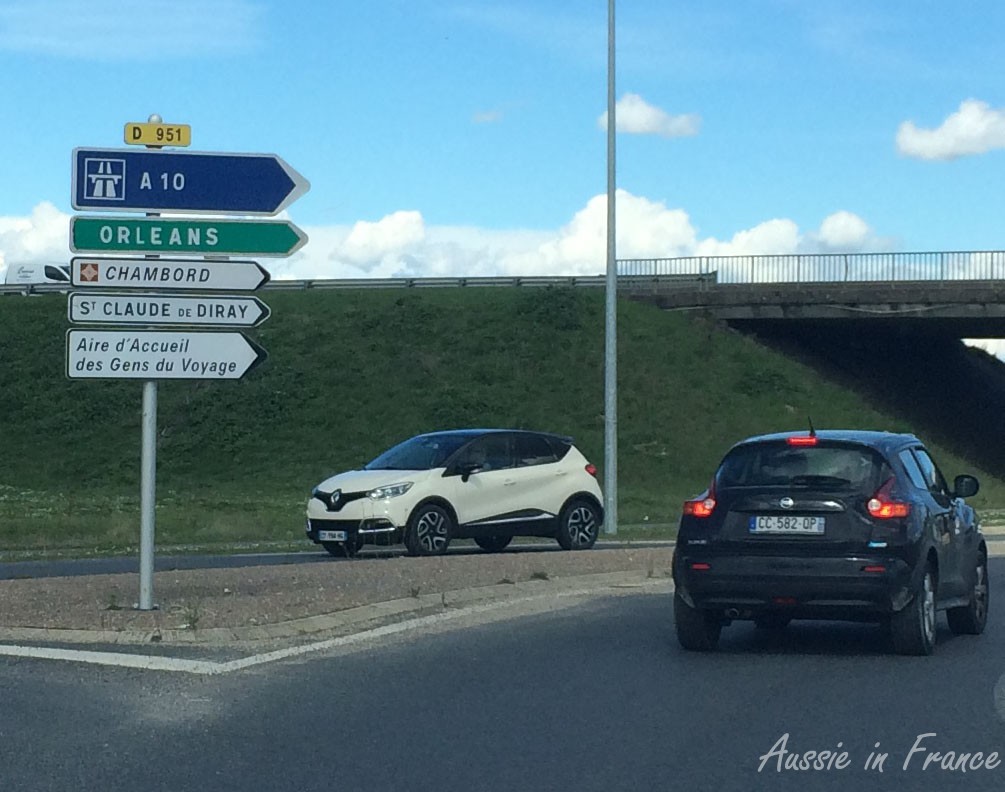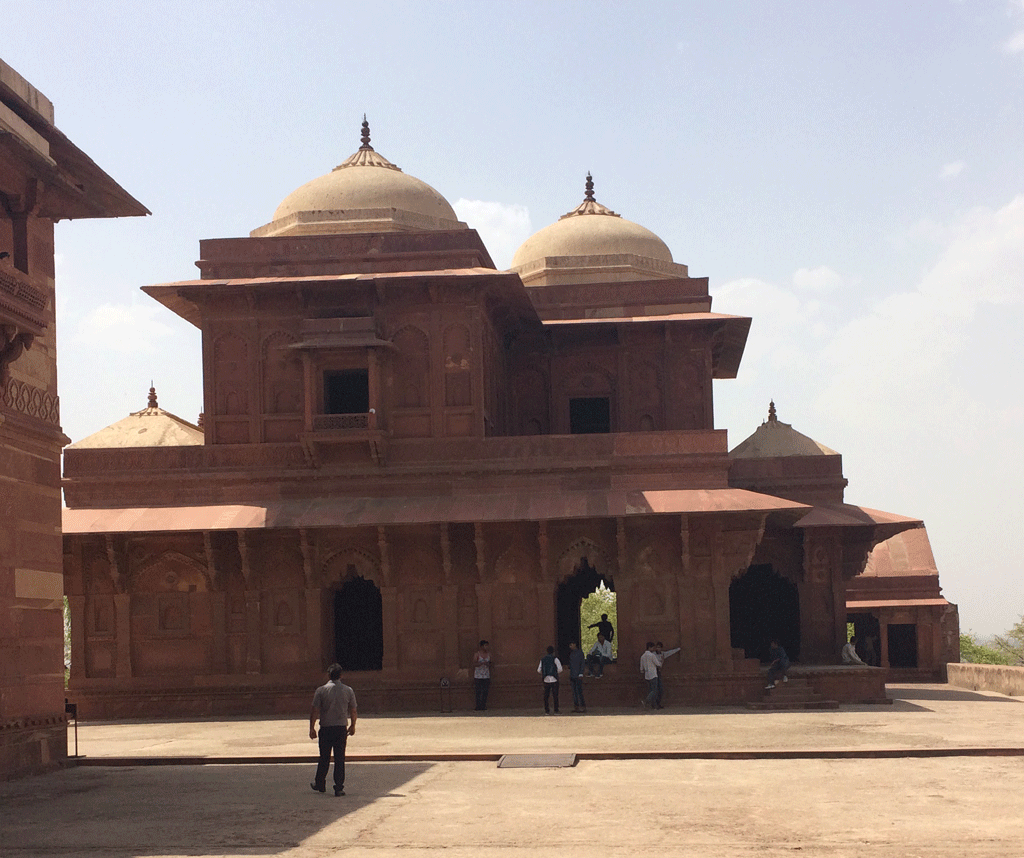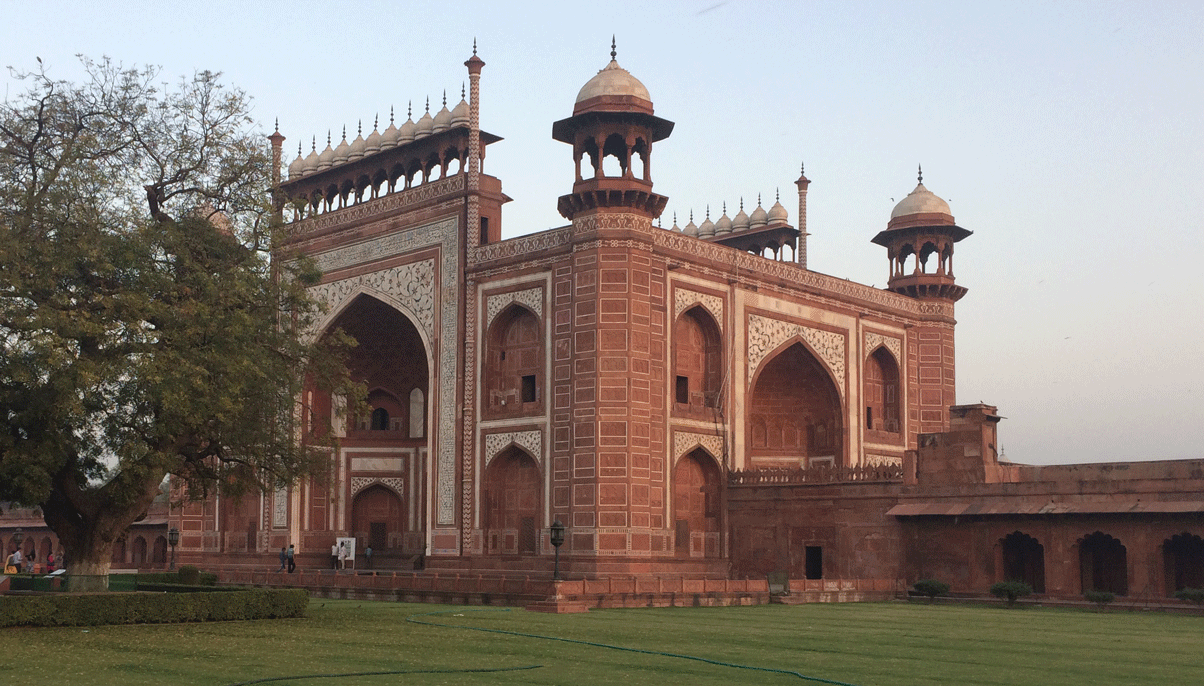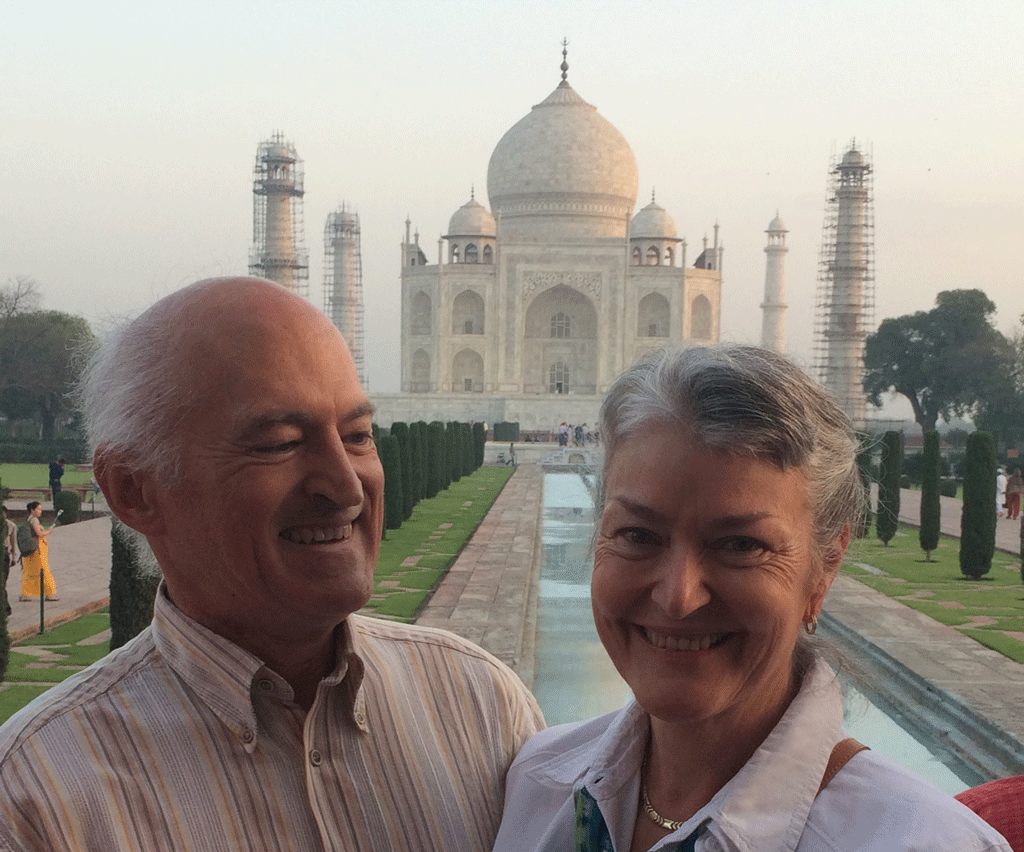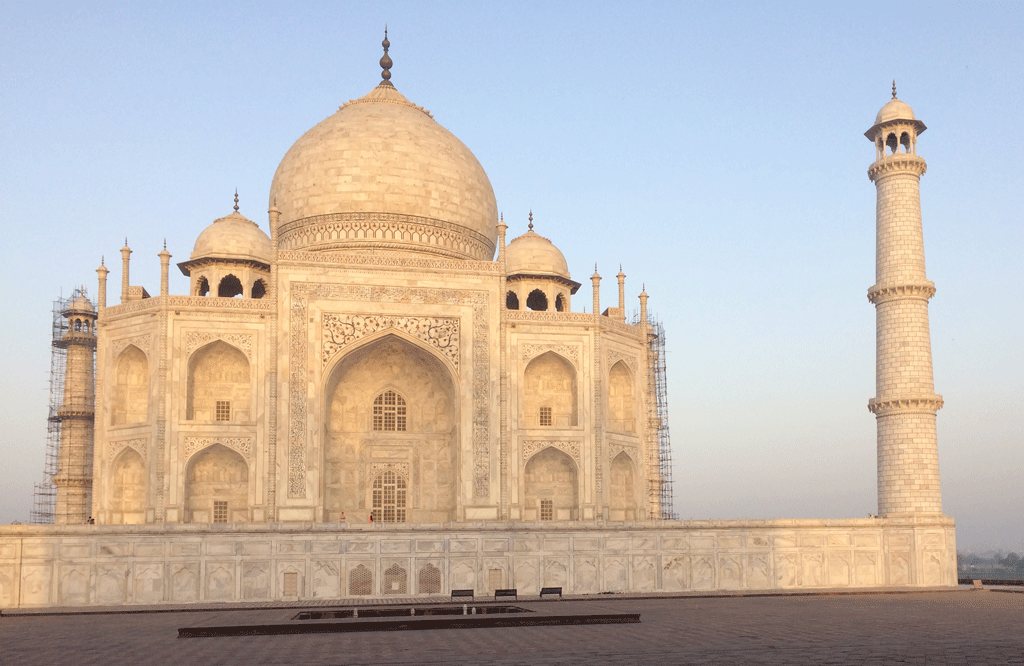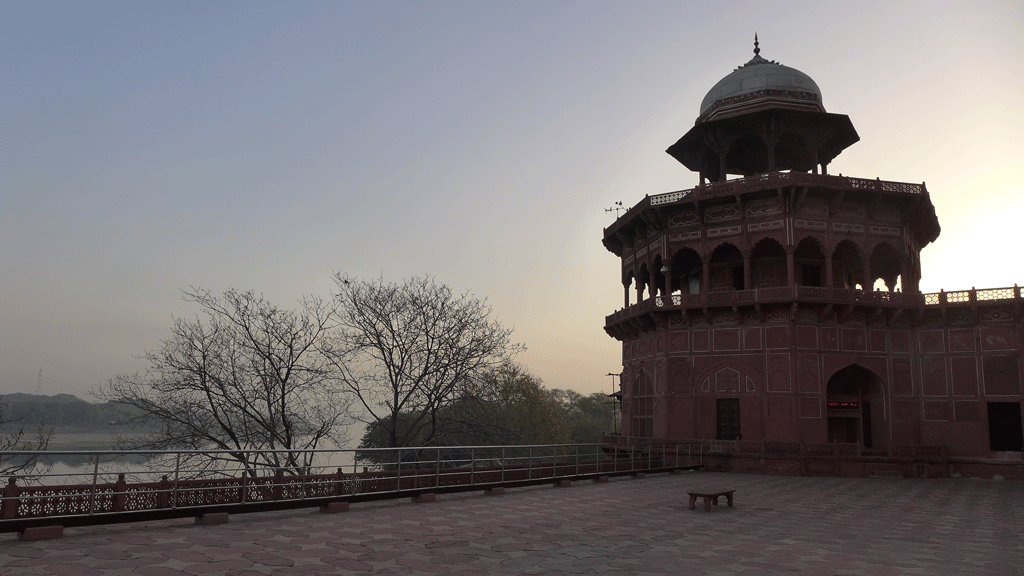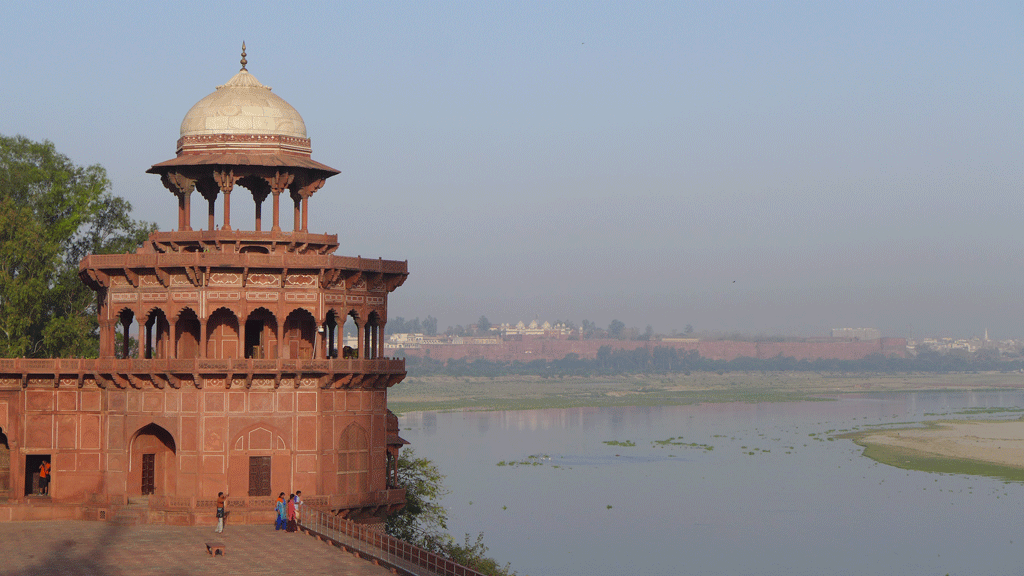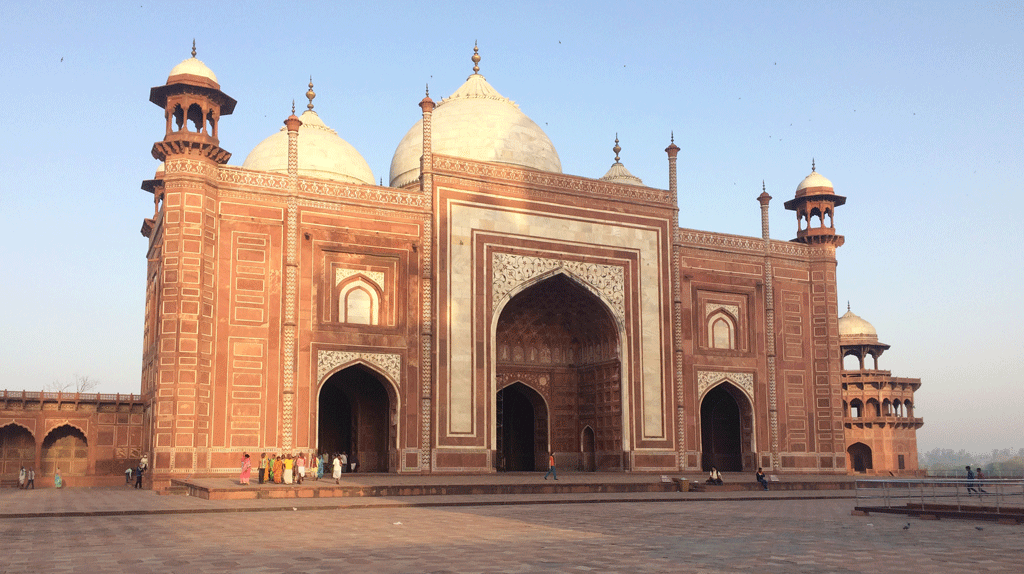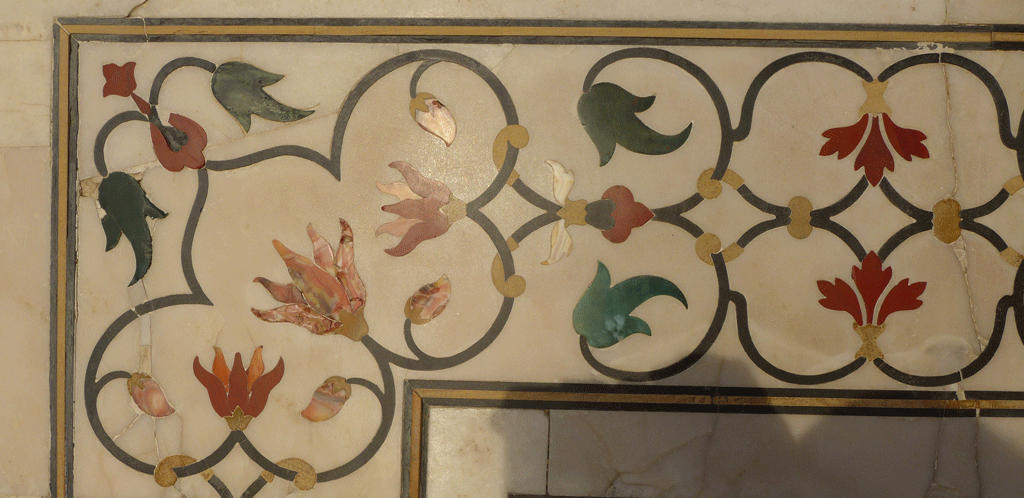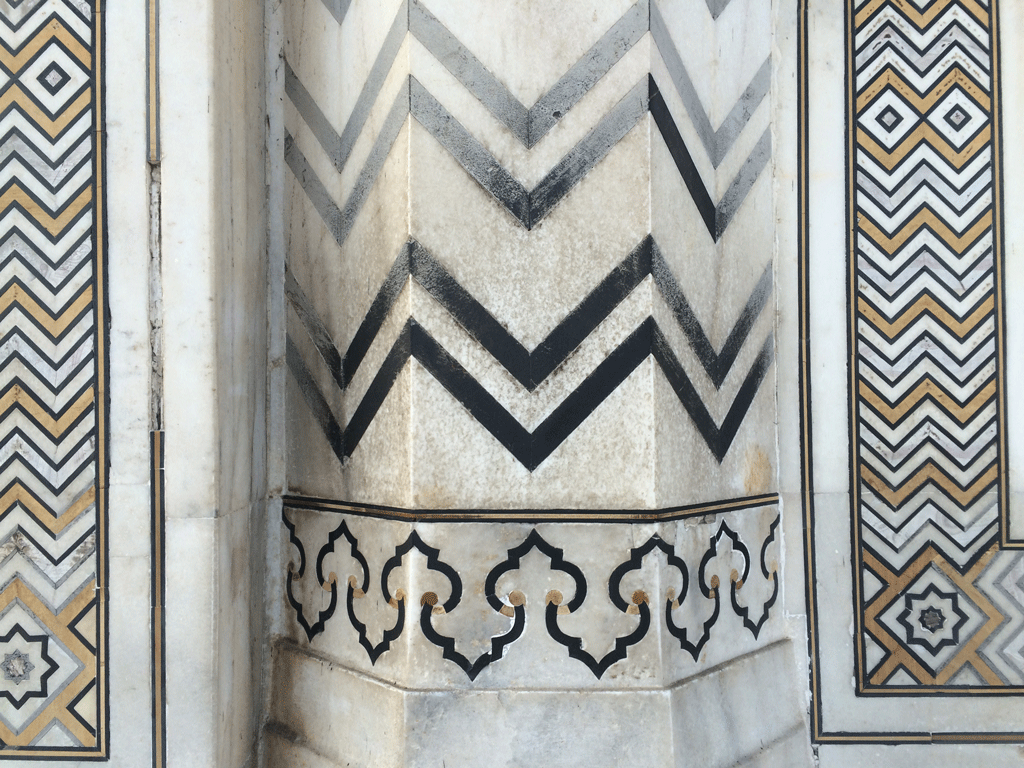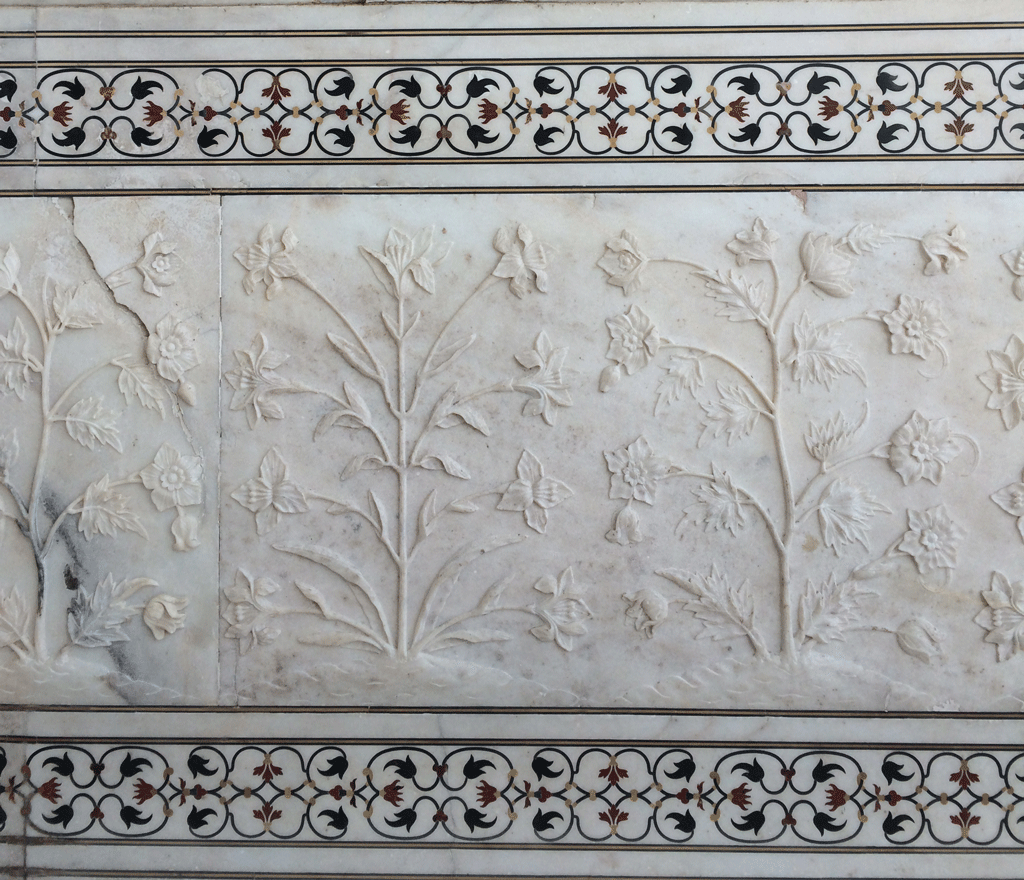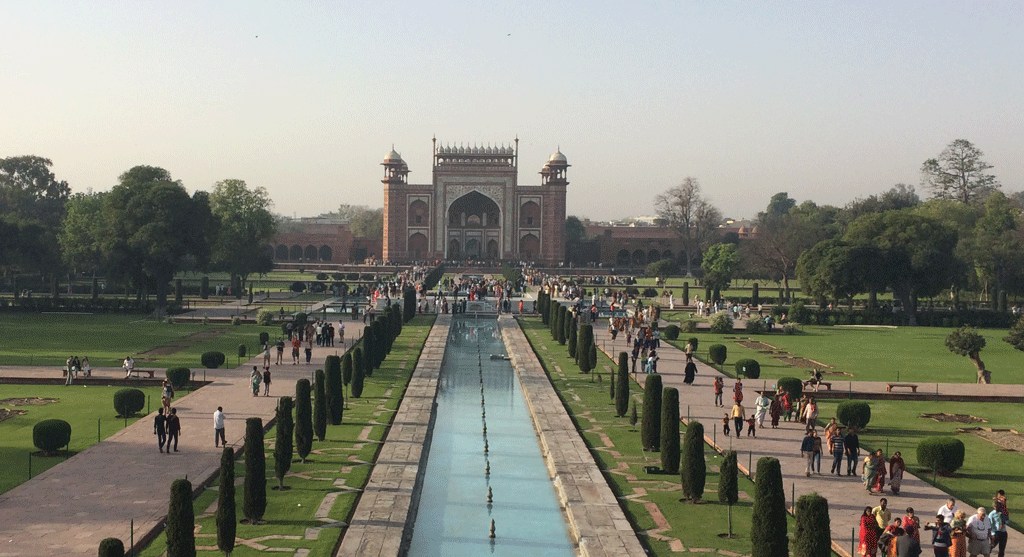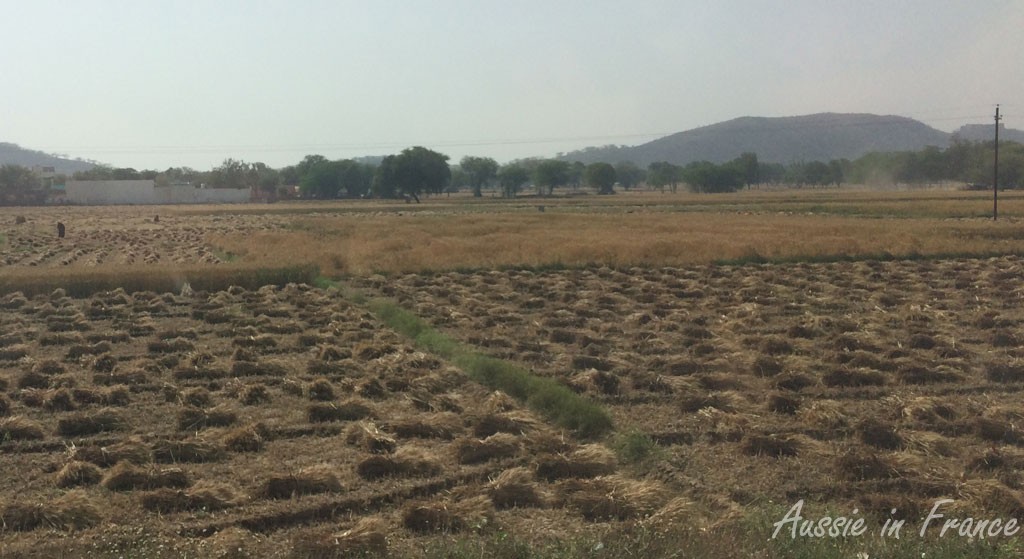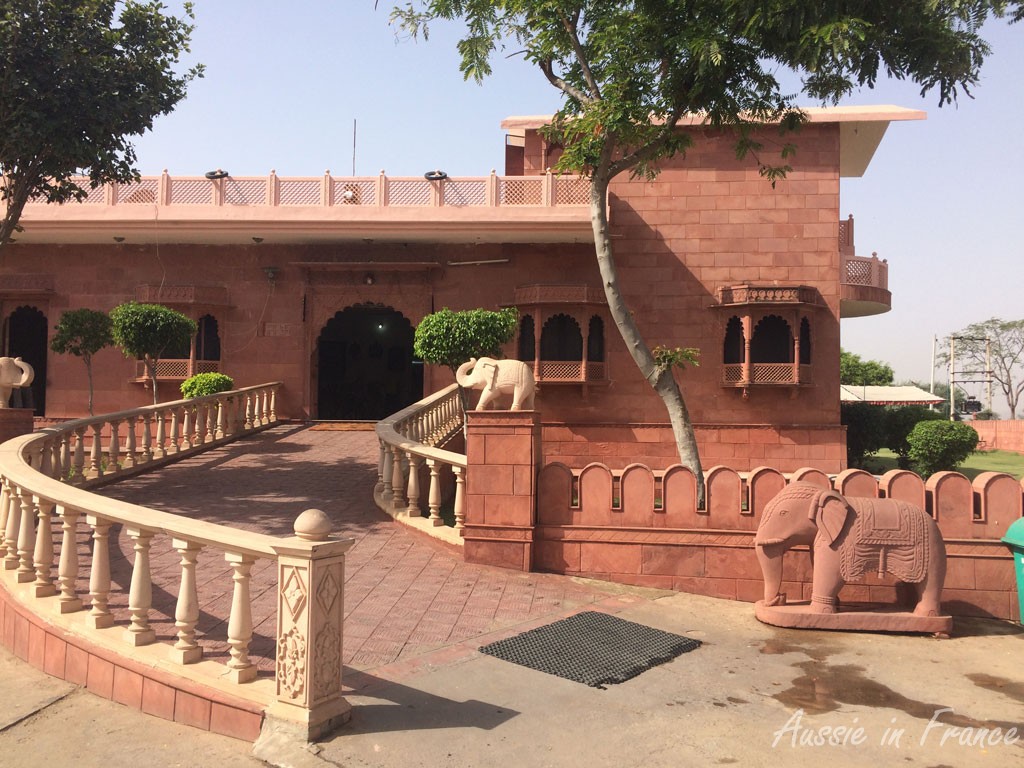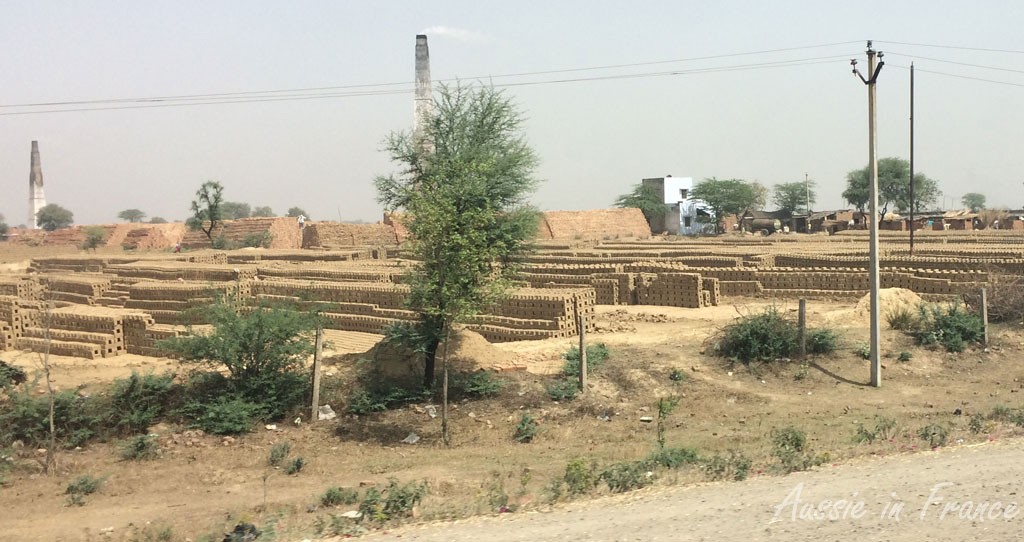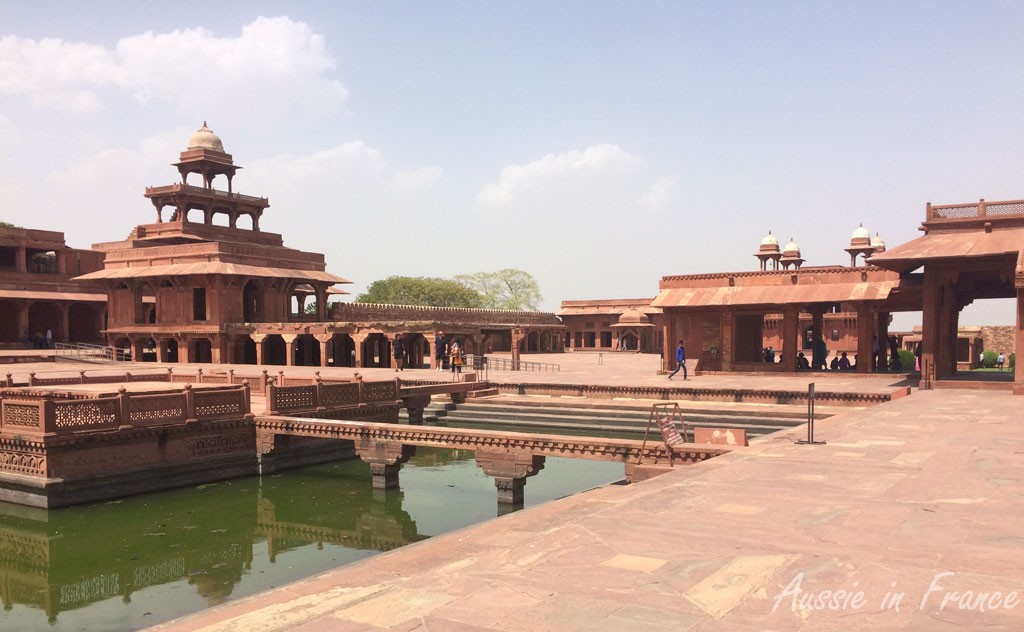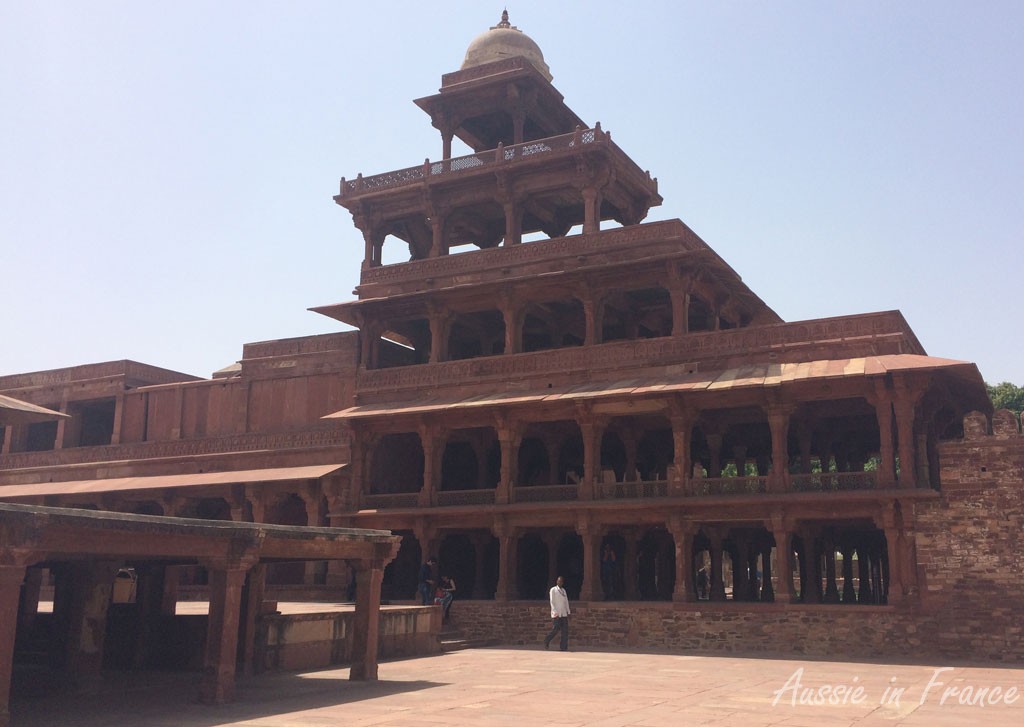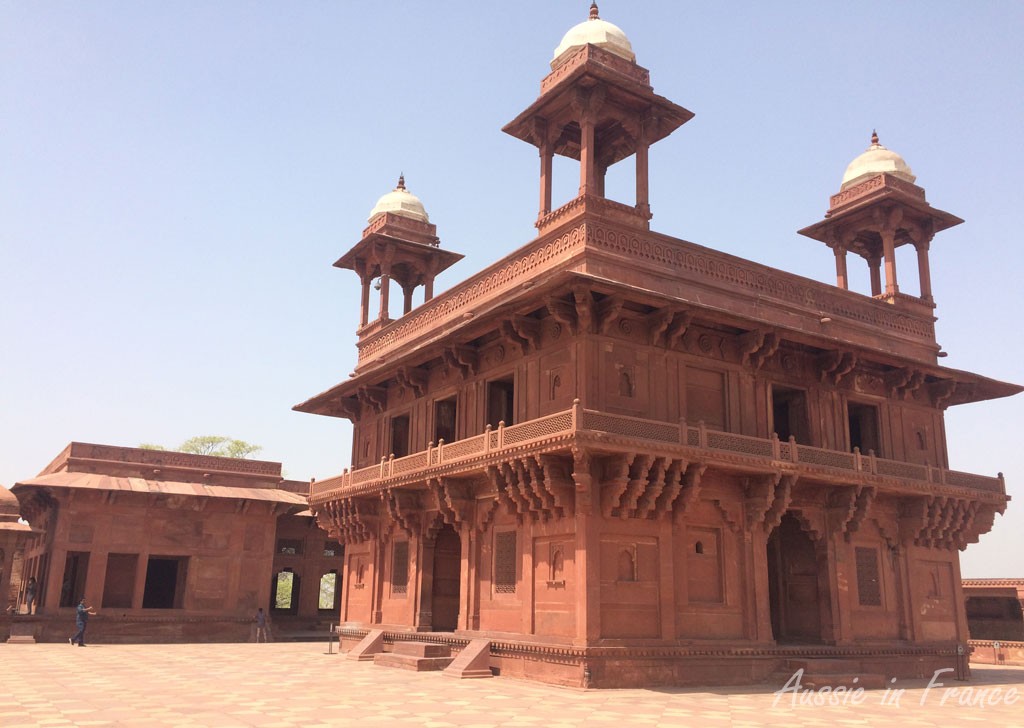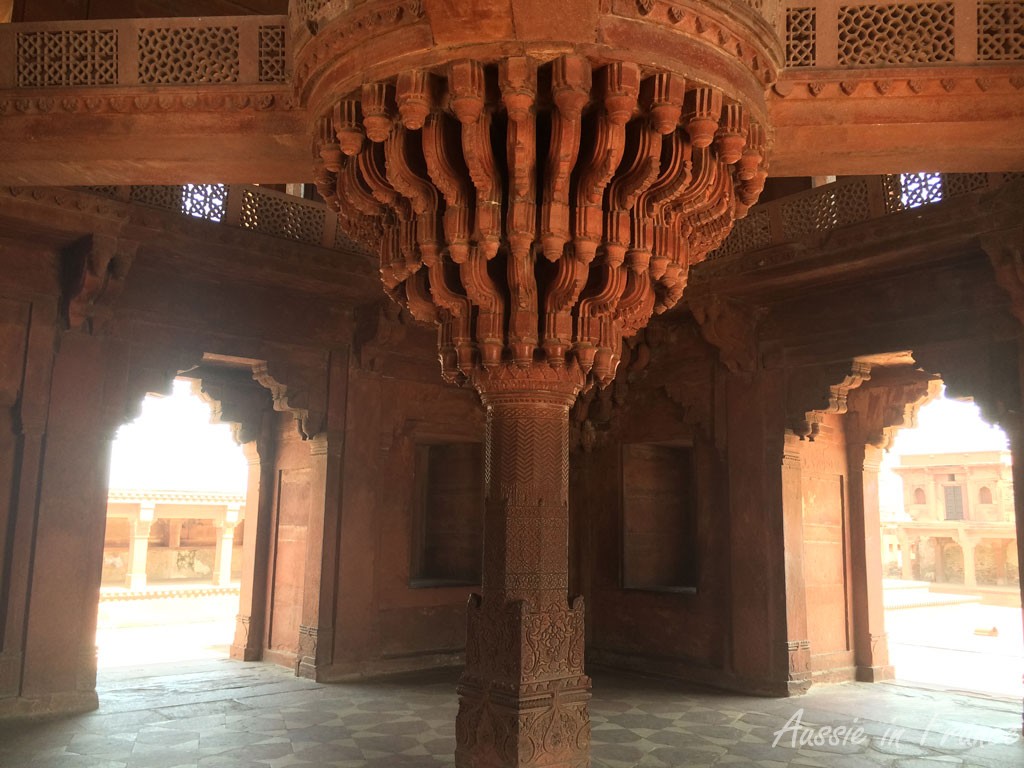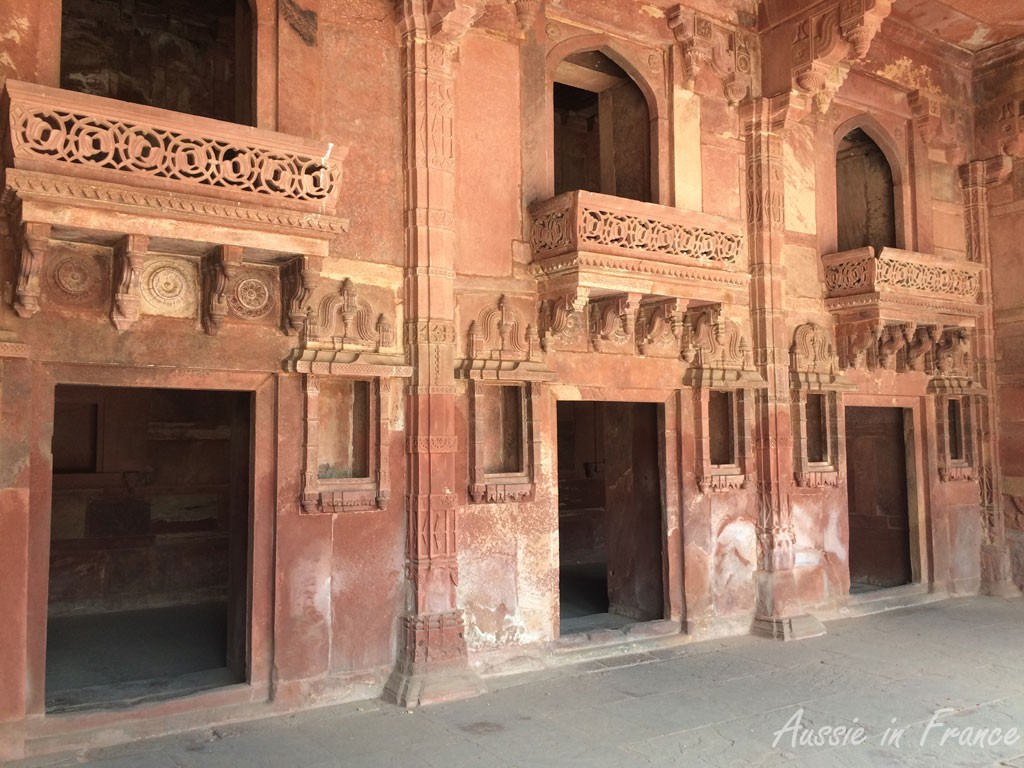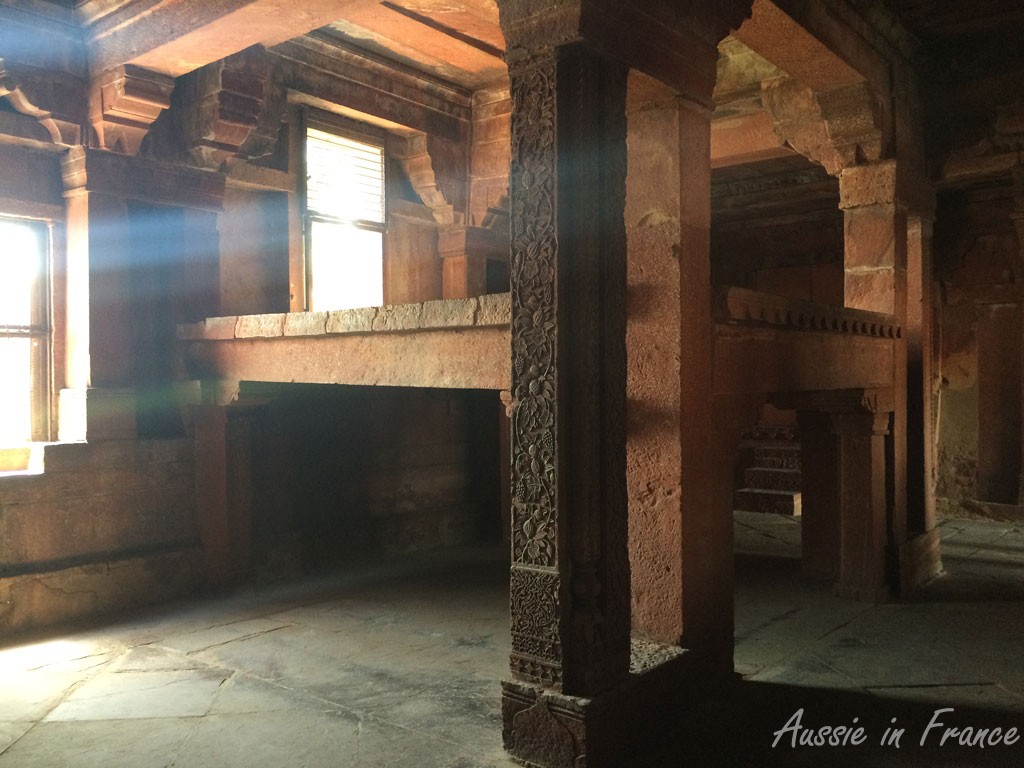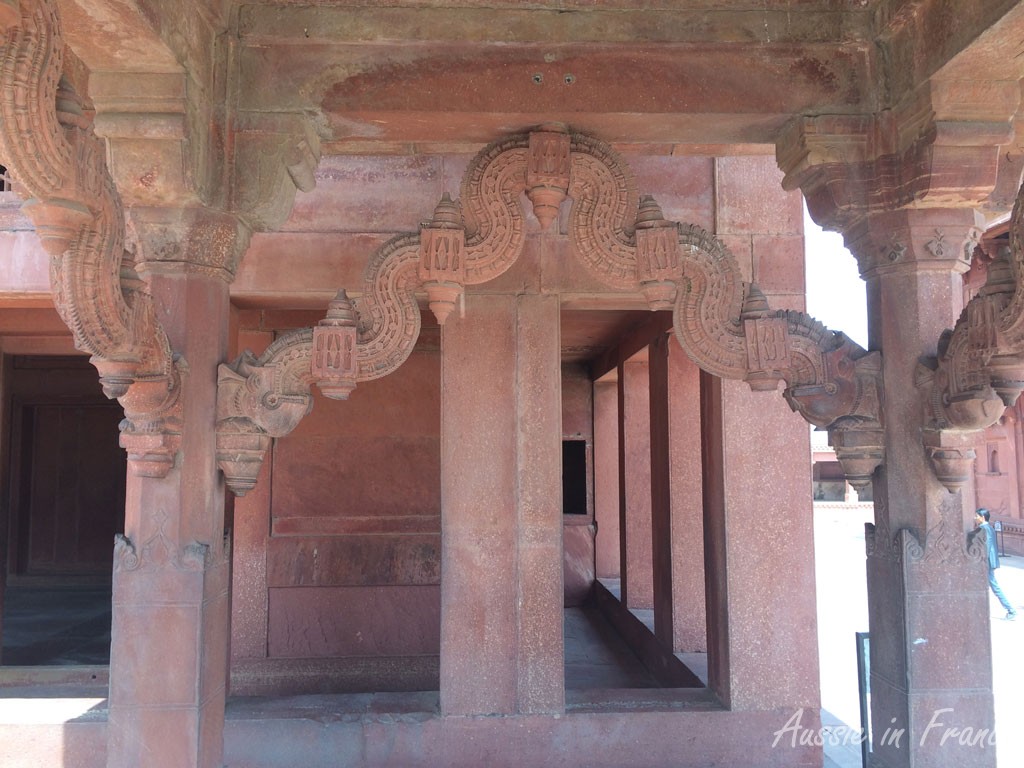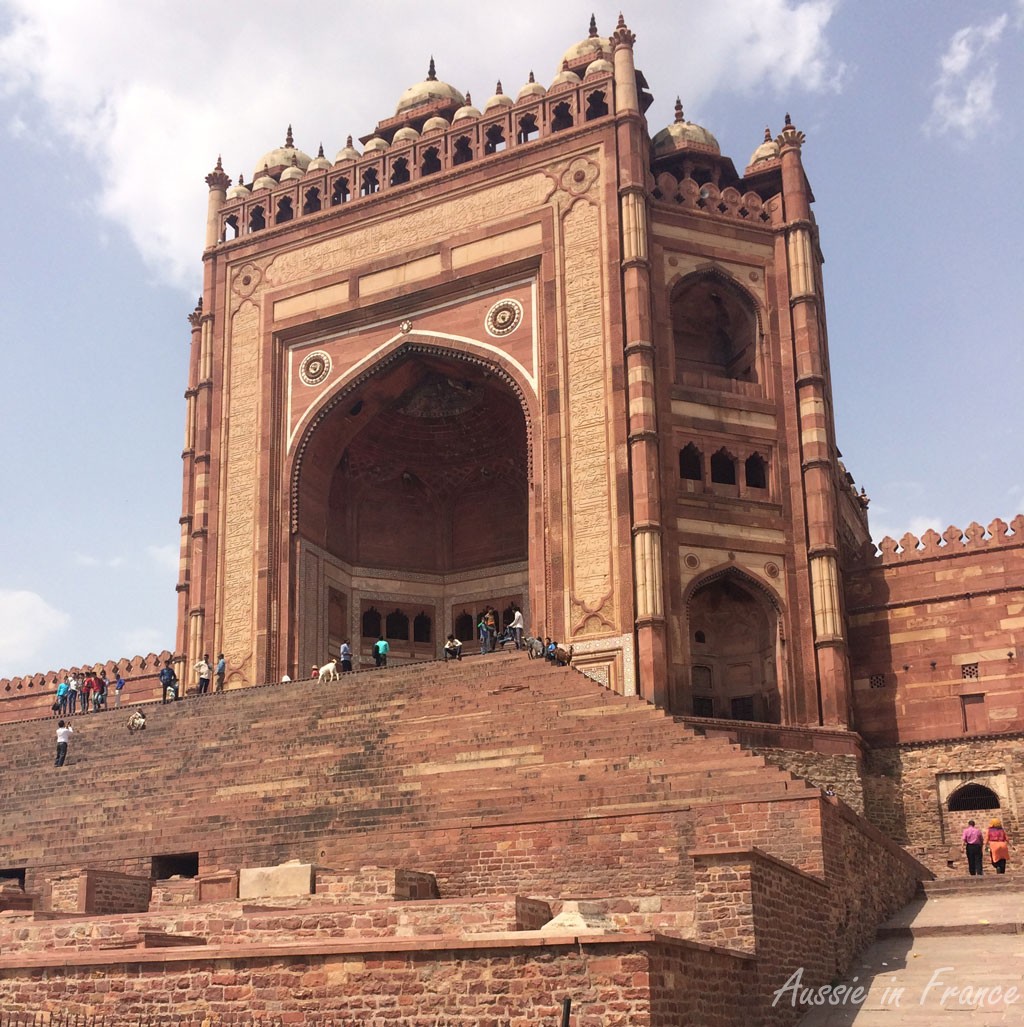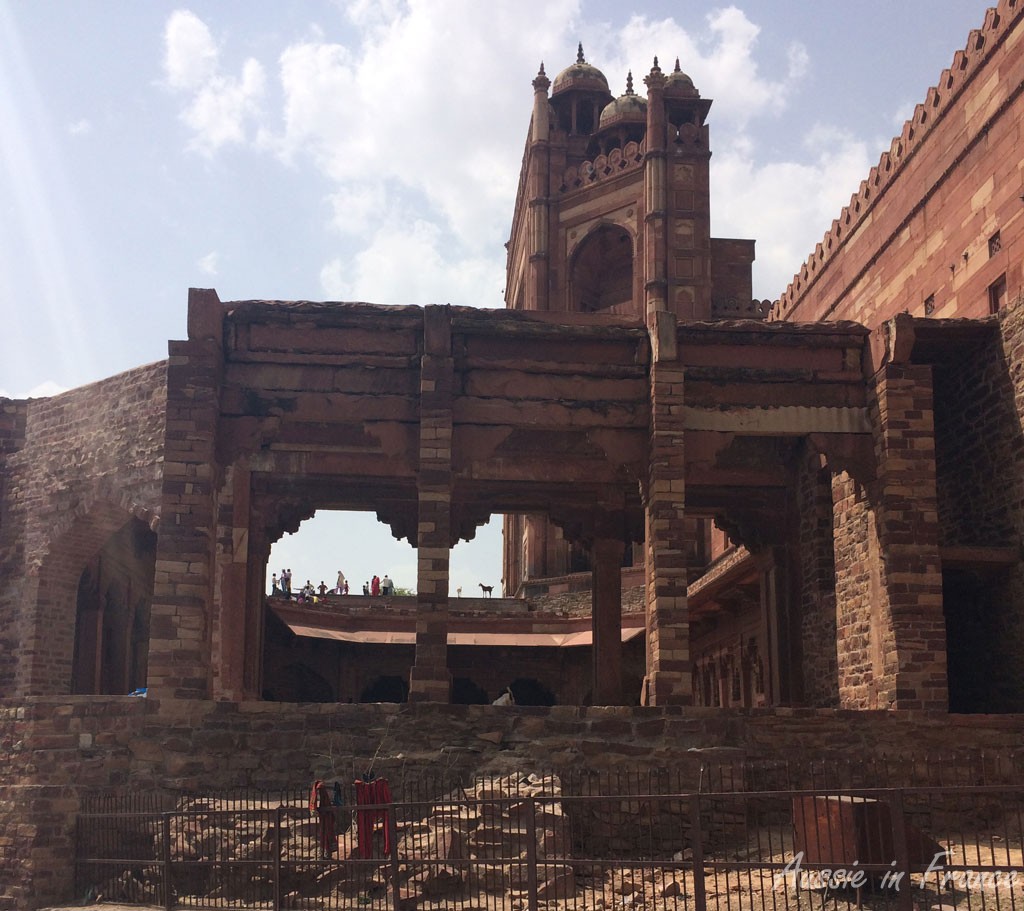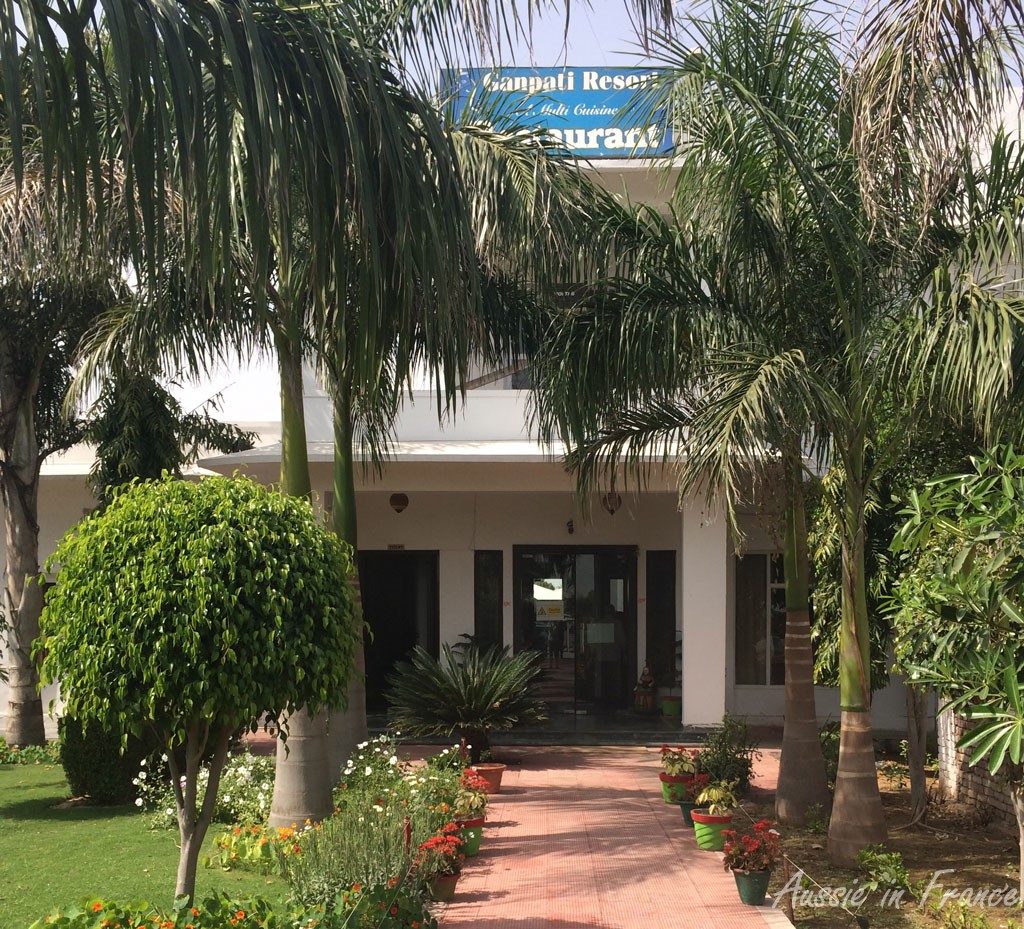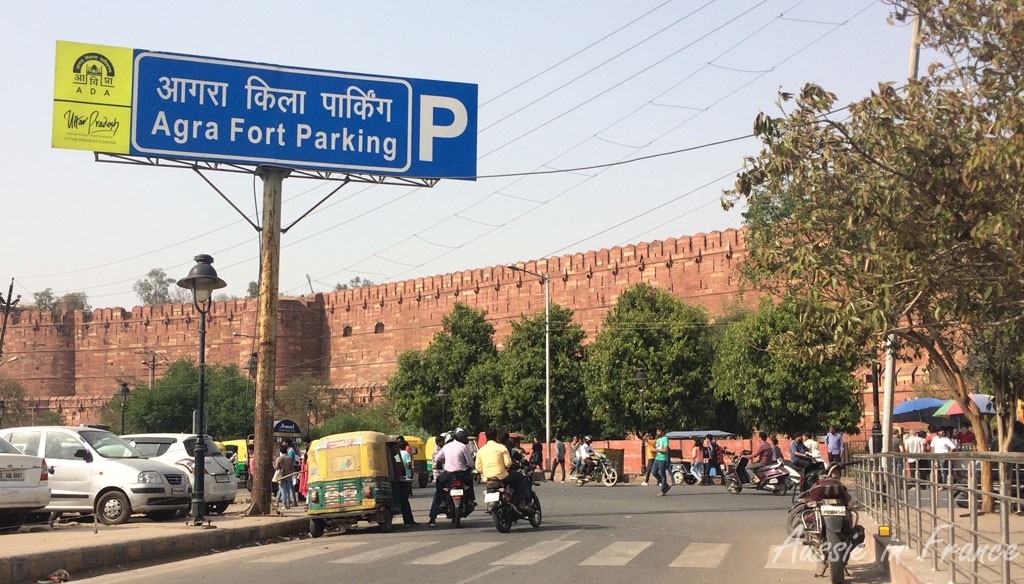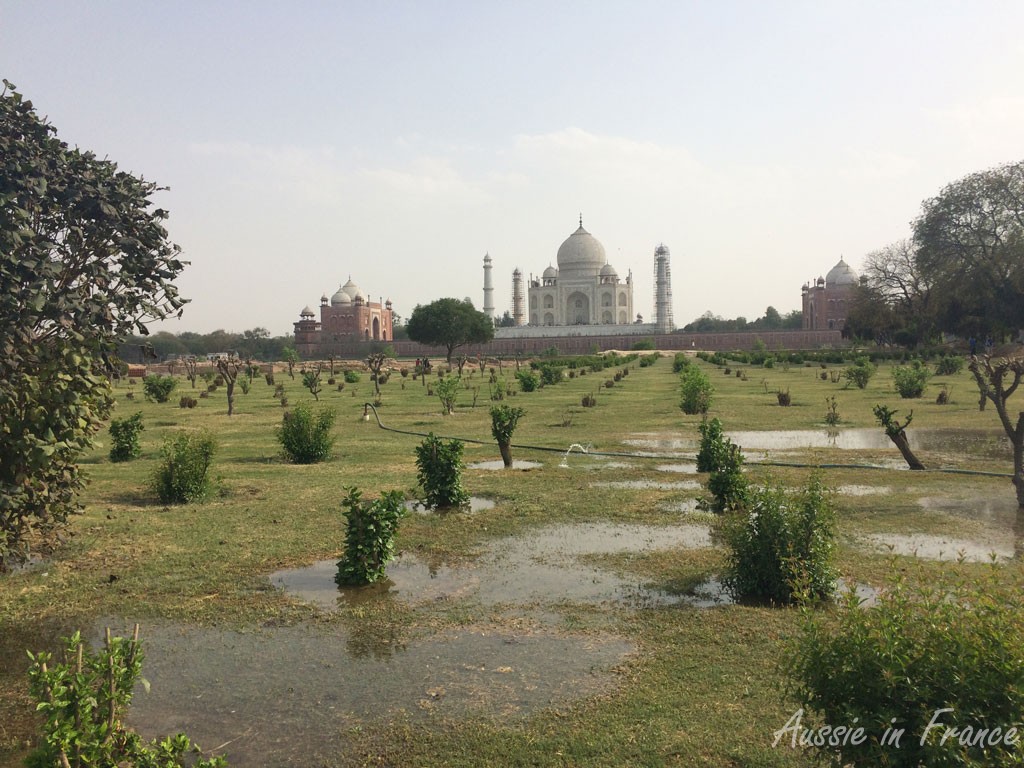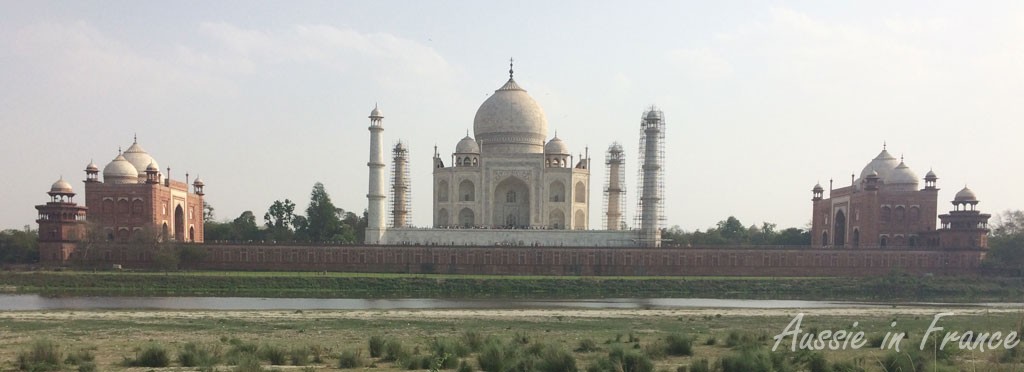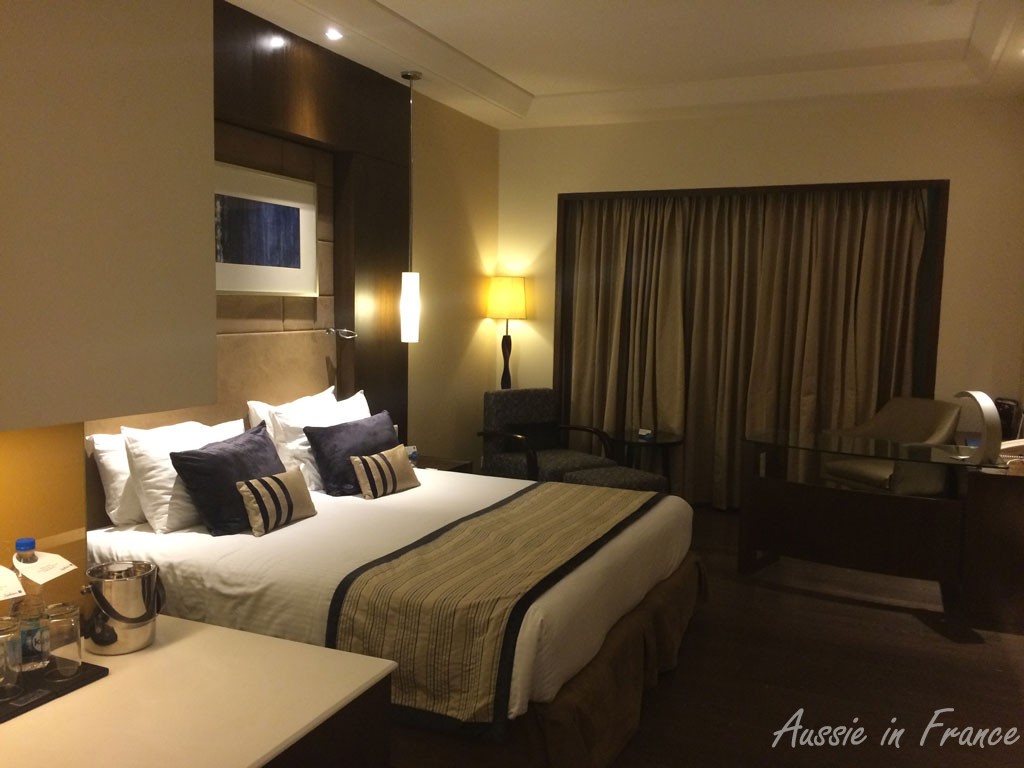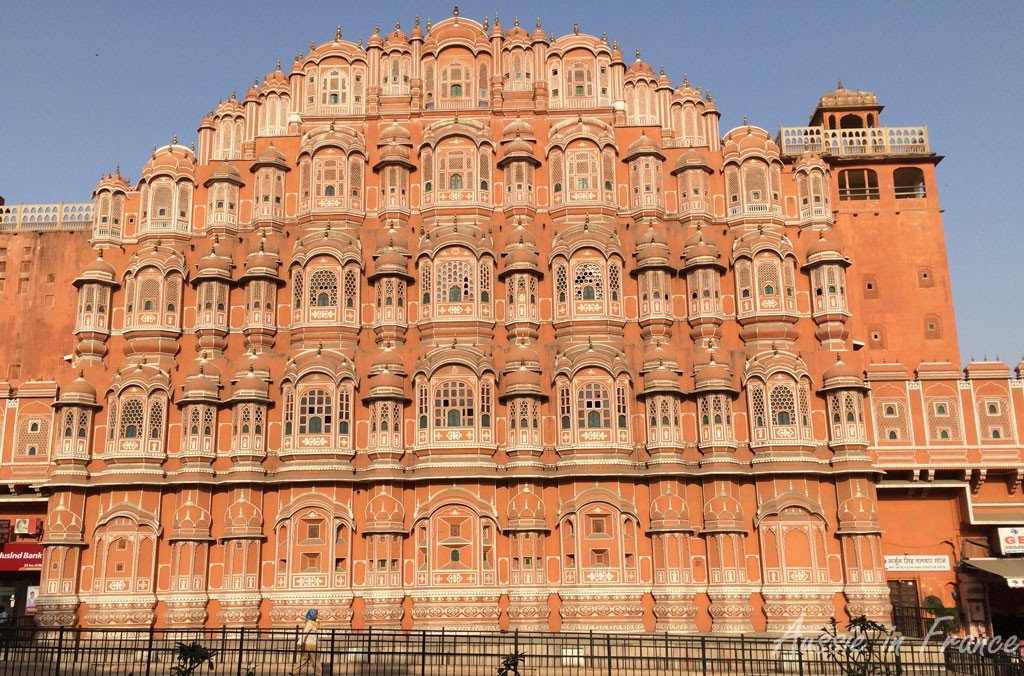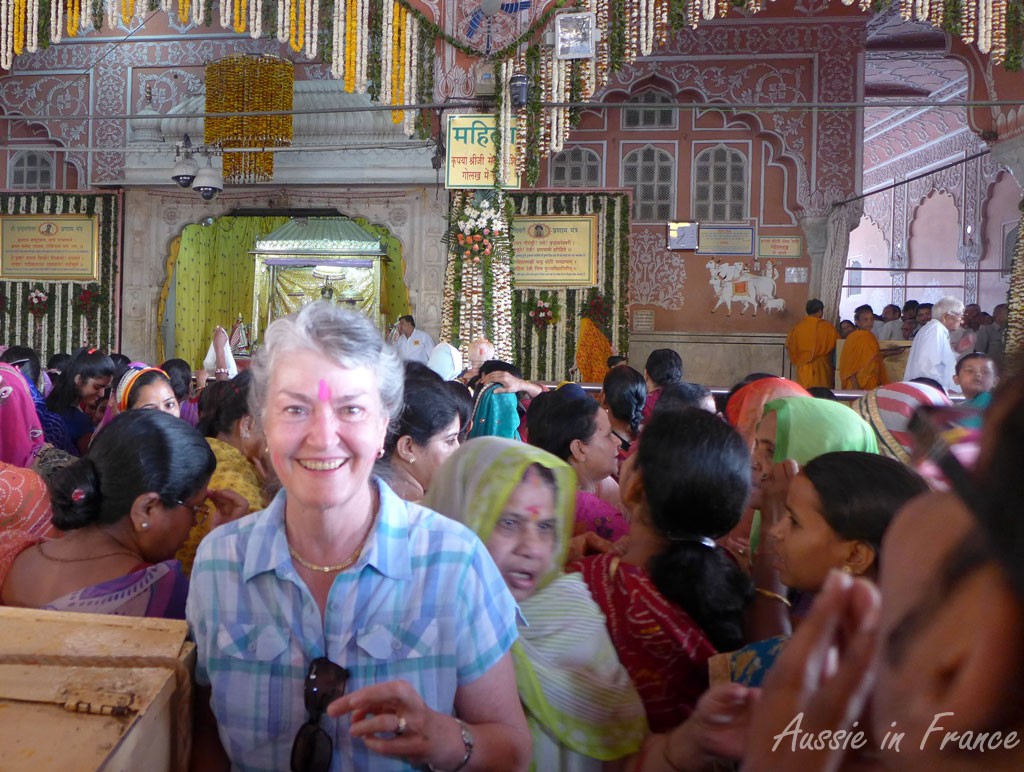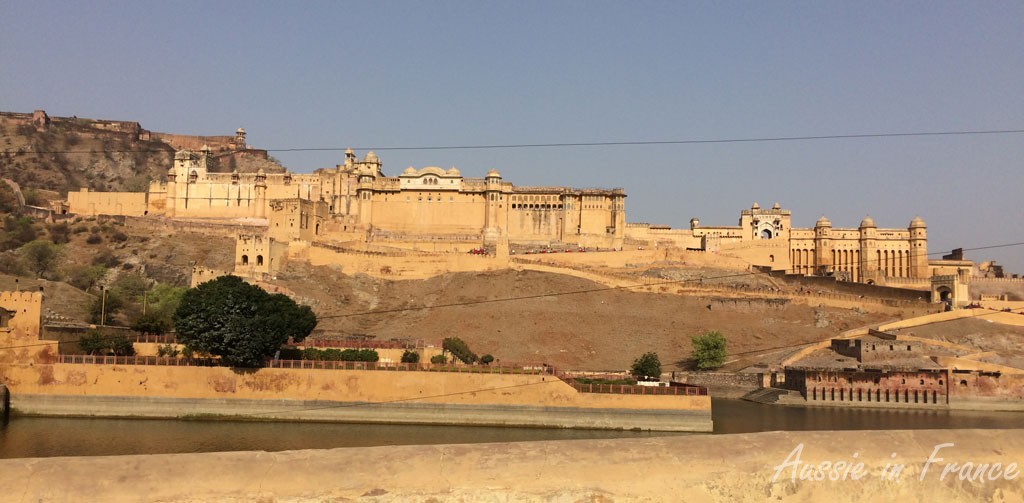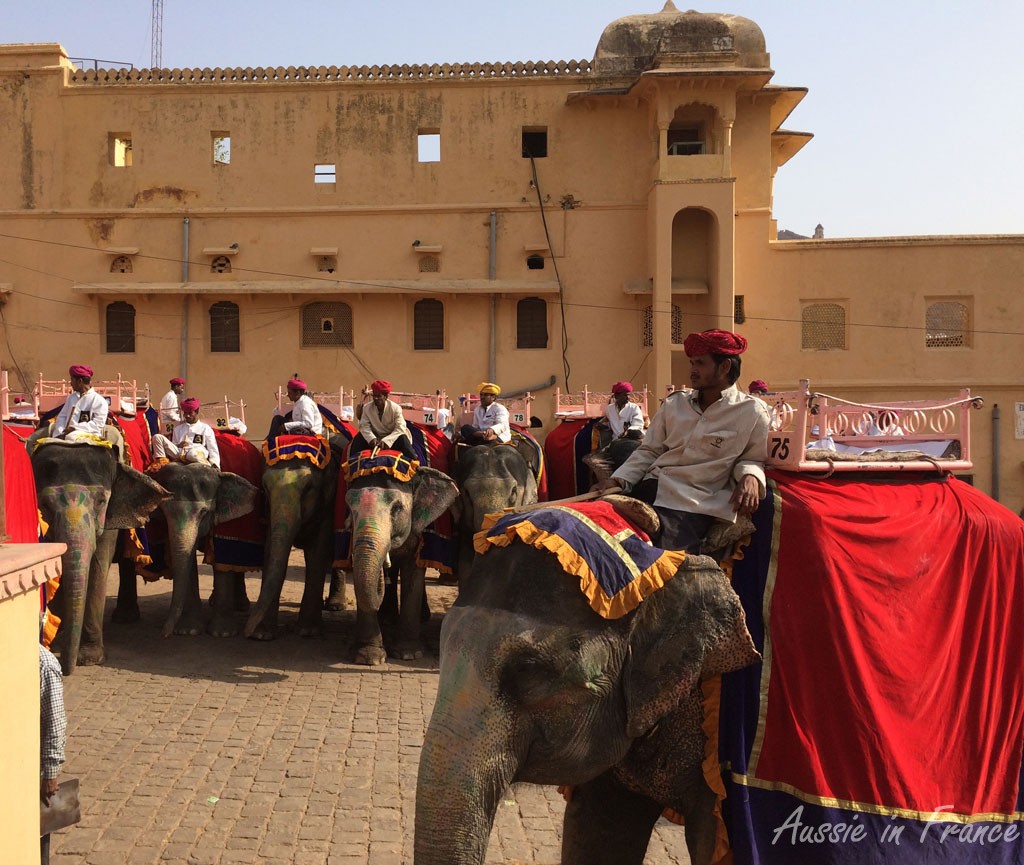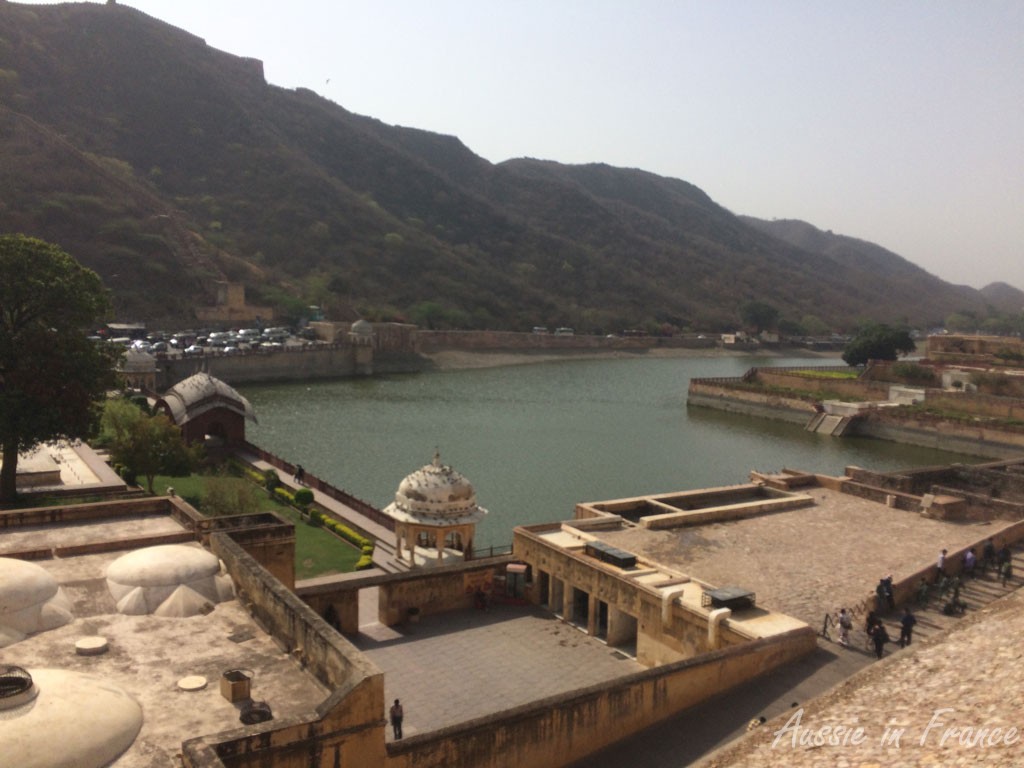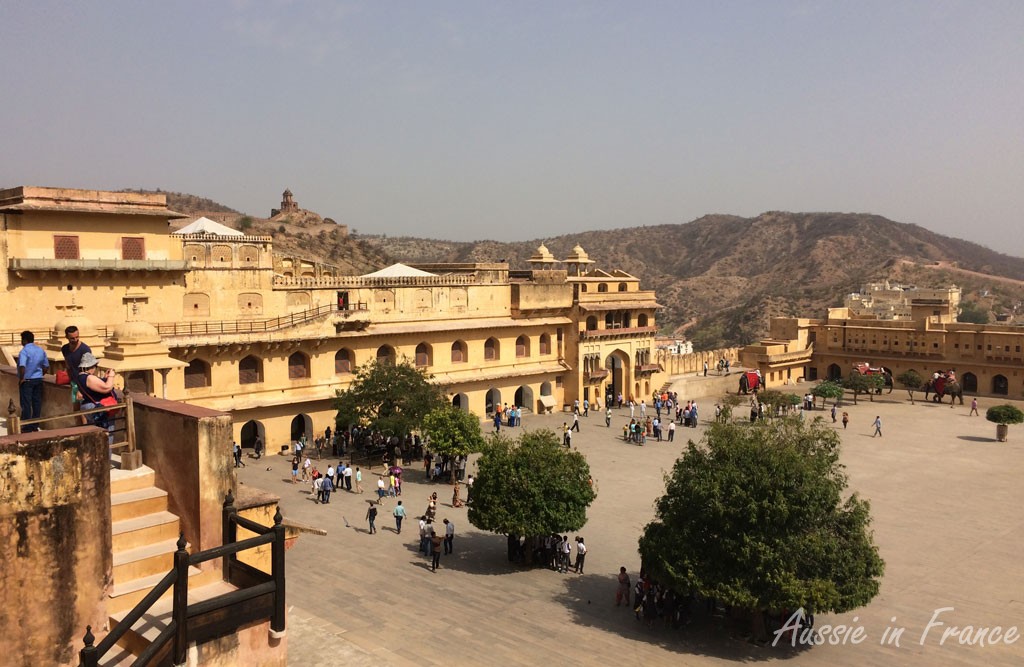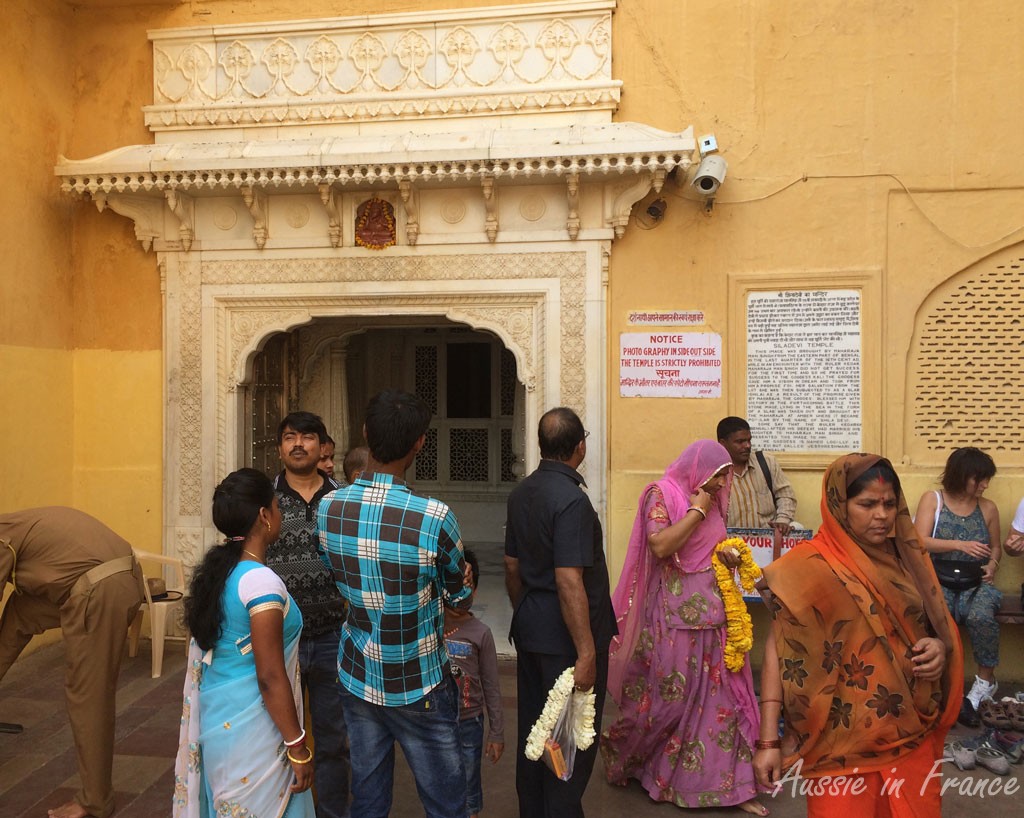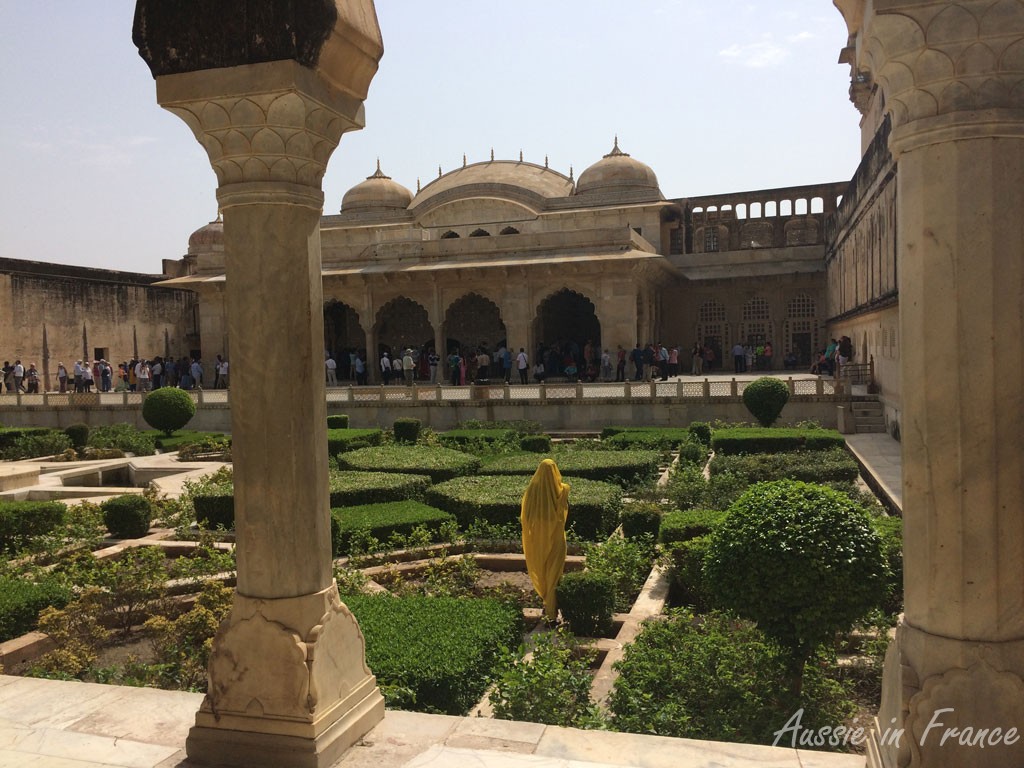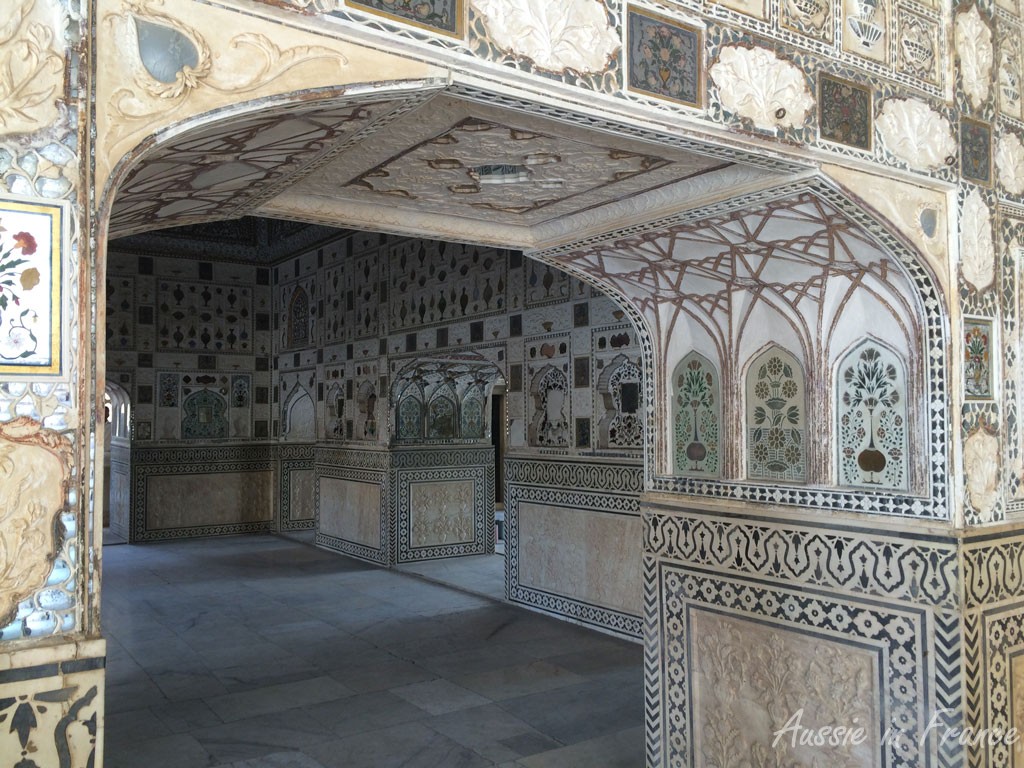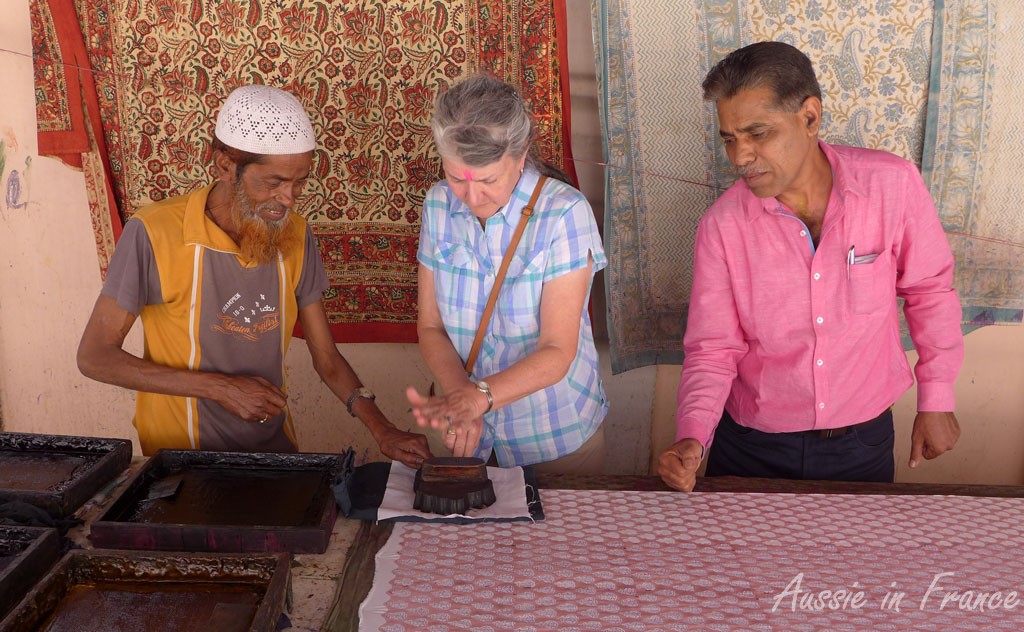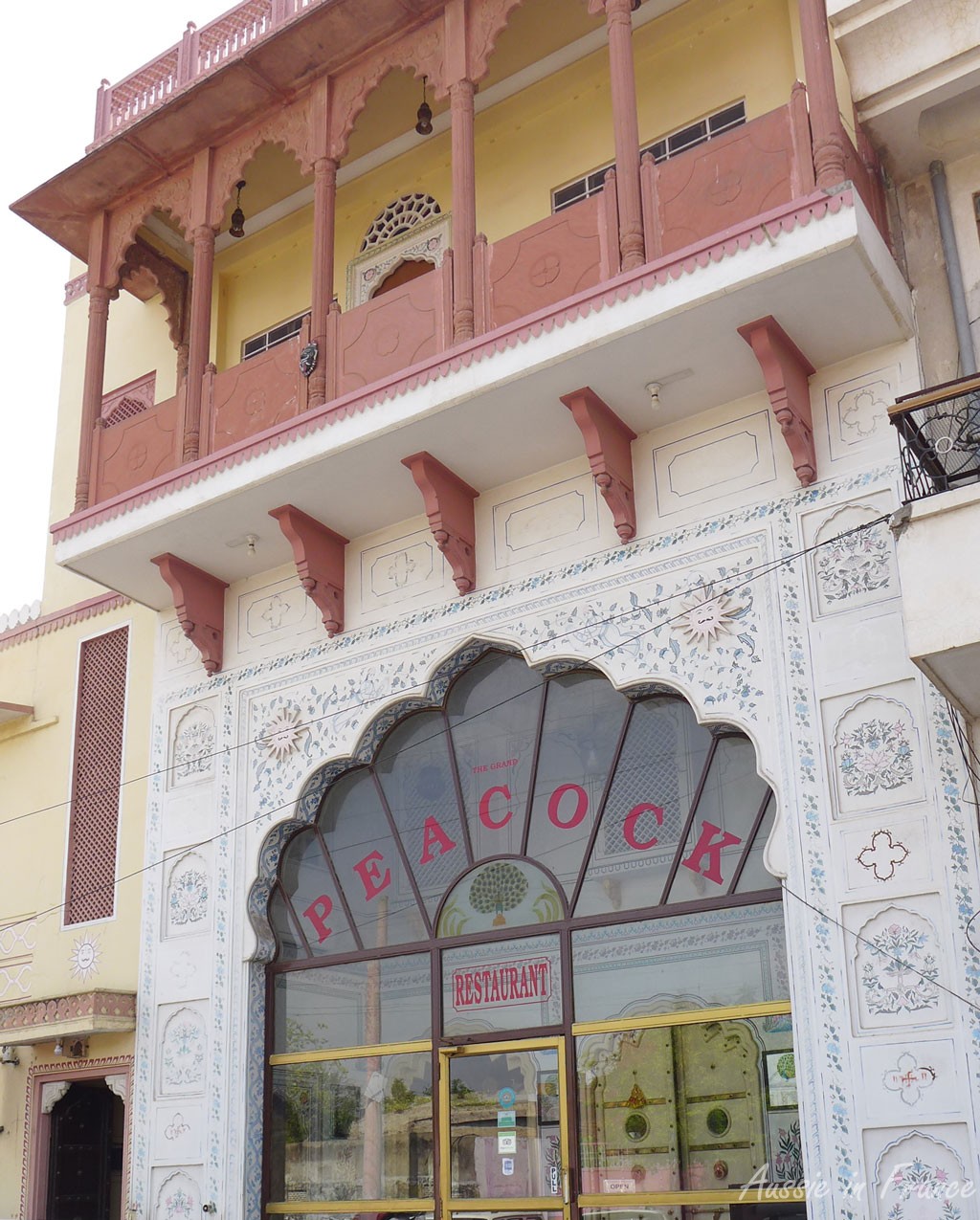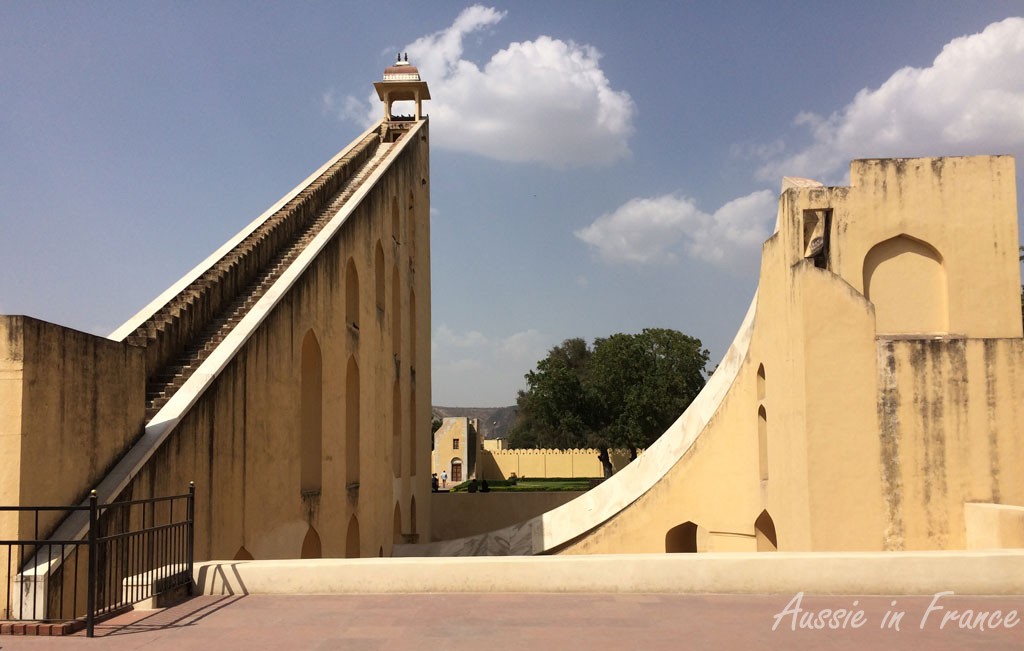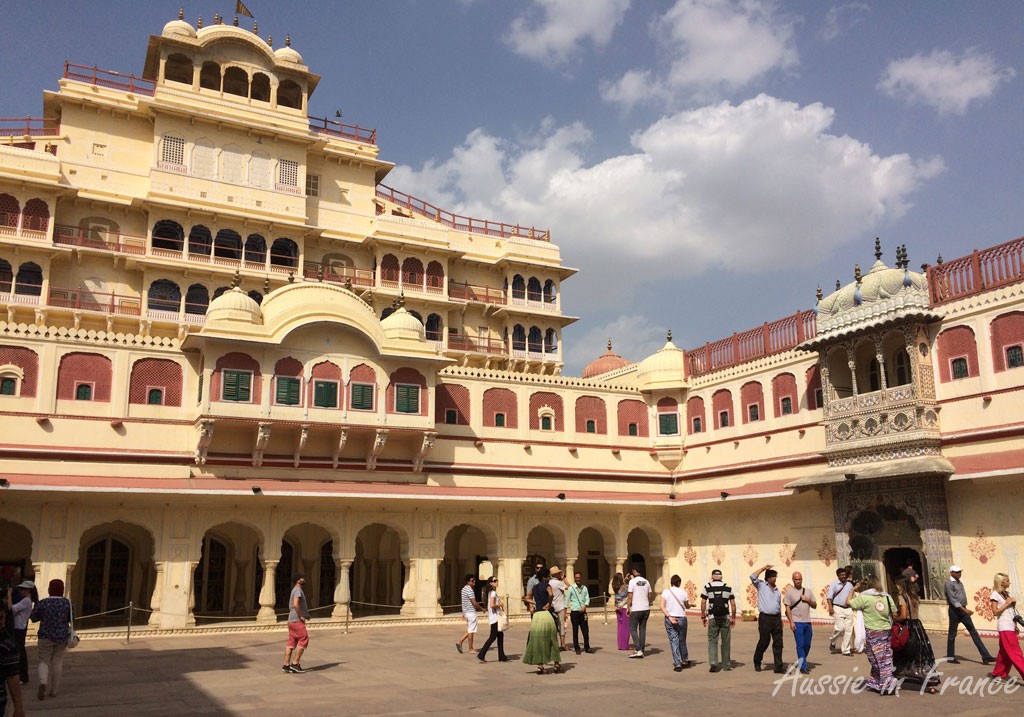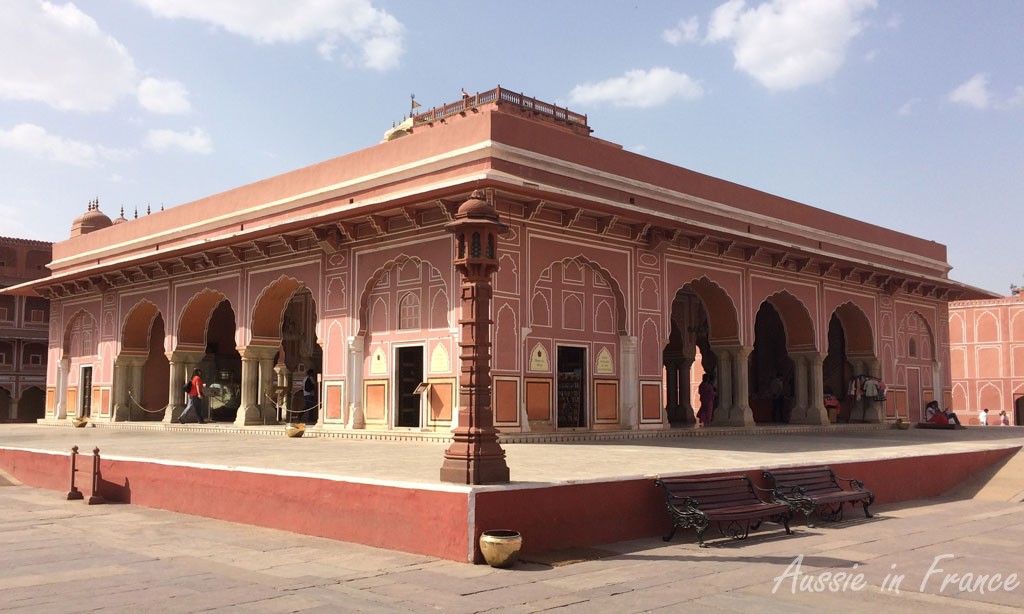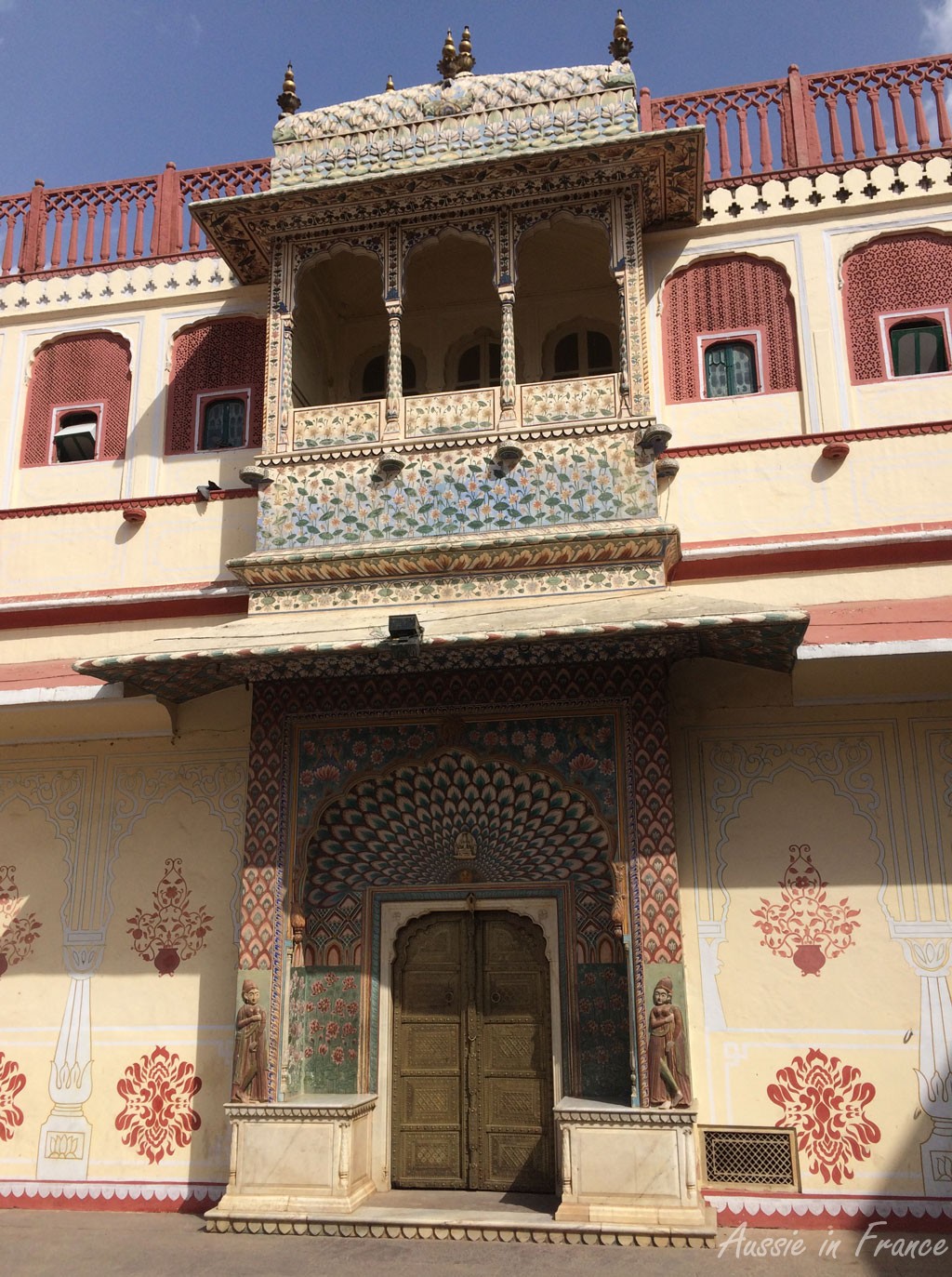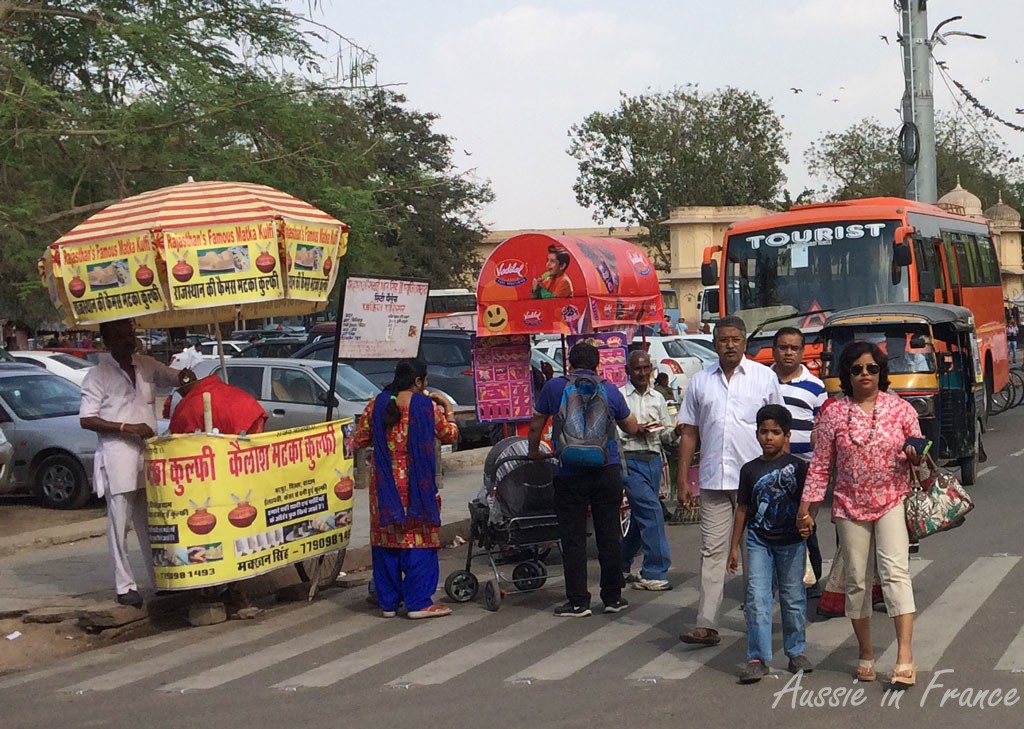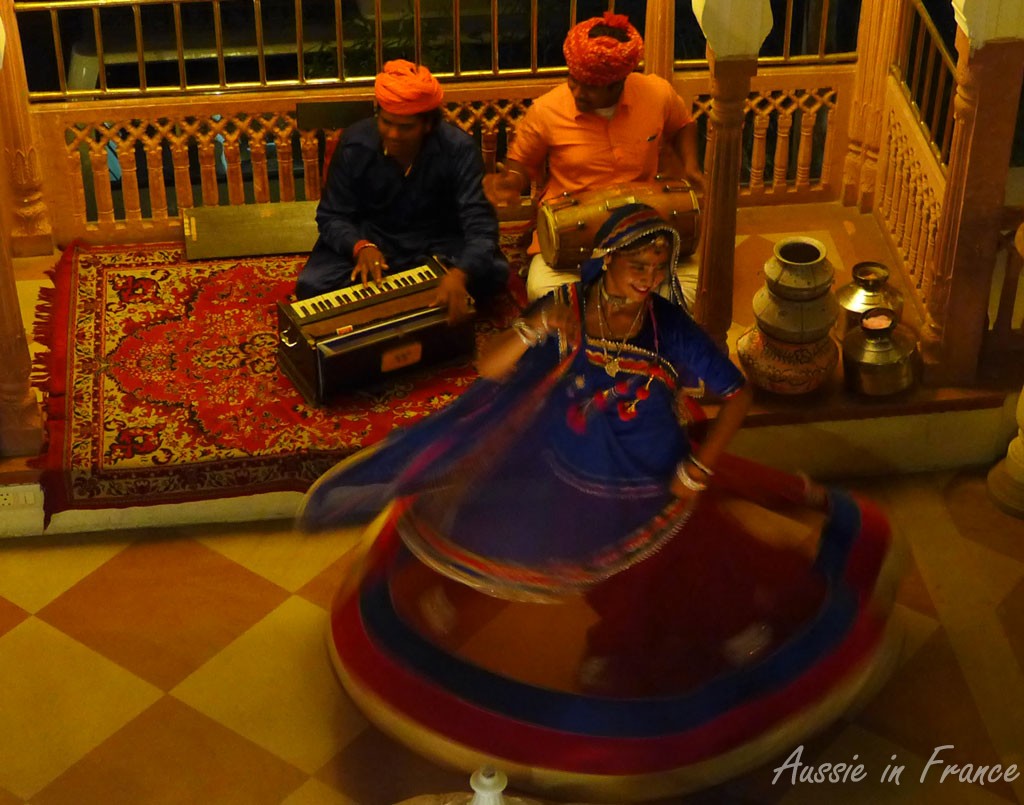If you are like me, when you visit somewhere new, you don’t just want to see the main attractions. You want to see the hidden face behind the castle or the museum, the little details on the way. You want to eat in the sort of restaurants the locals go to. You want to understand how the town or village grew and developed, what sort of people live there. My husband and I chose Blois as the place we wanted to live in after his retirement and have set about discovering its every nook and cranny. Because we love it so much, I’d like to share with you our secret Blois by taking you on a personal guided tour. If you have binoculars, I suggest you take them with you!
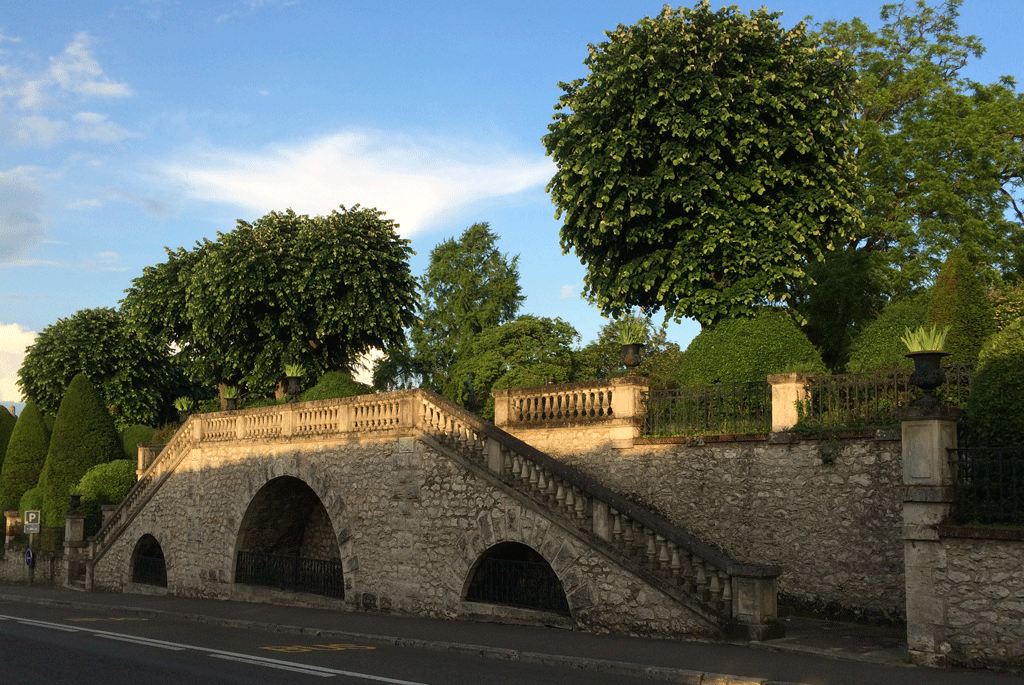 Steps leading up to the royal garden
Steps leading up to the royal gardenLet’s start at the train station and discover the historical centre together. We’ll be walking down Rue Gambetta towards Blois Royal Castle and for those you are joining us by car, we’ll meet you in the open-air parking lot on the corner of Gambetta and Chanzy. Across the road from the parking lot is a high stone wall and at the top is the King’s Garden (Jardin du Roi).
The first thing you will see when you enter the garden is a statue of Diane of the Chase by Anna Hyatt Huntingdon. An article in our local paper, La Nouvelle République, tells the story of how the Salon de Paris art exhibition in 1910 refused to give first prize to Anna Hyatt for the statue on the pretext that “It’s far too big and beautiful for a woman to have made it!” How wonderful to be a female in those days!
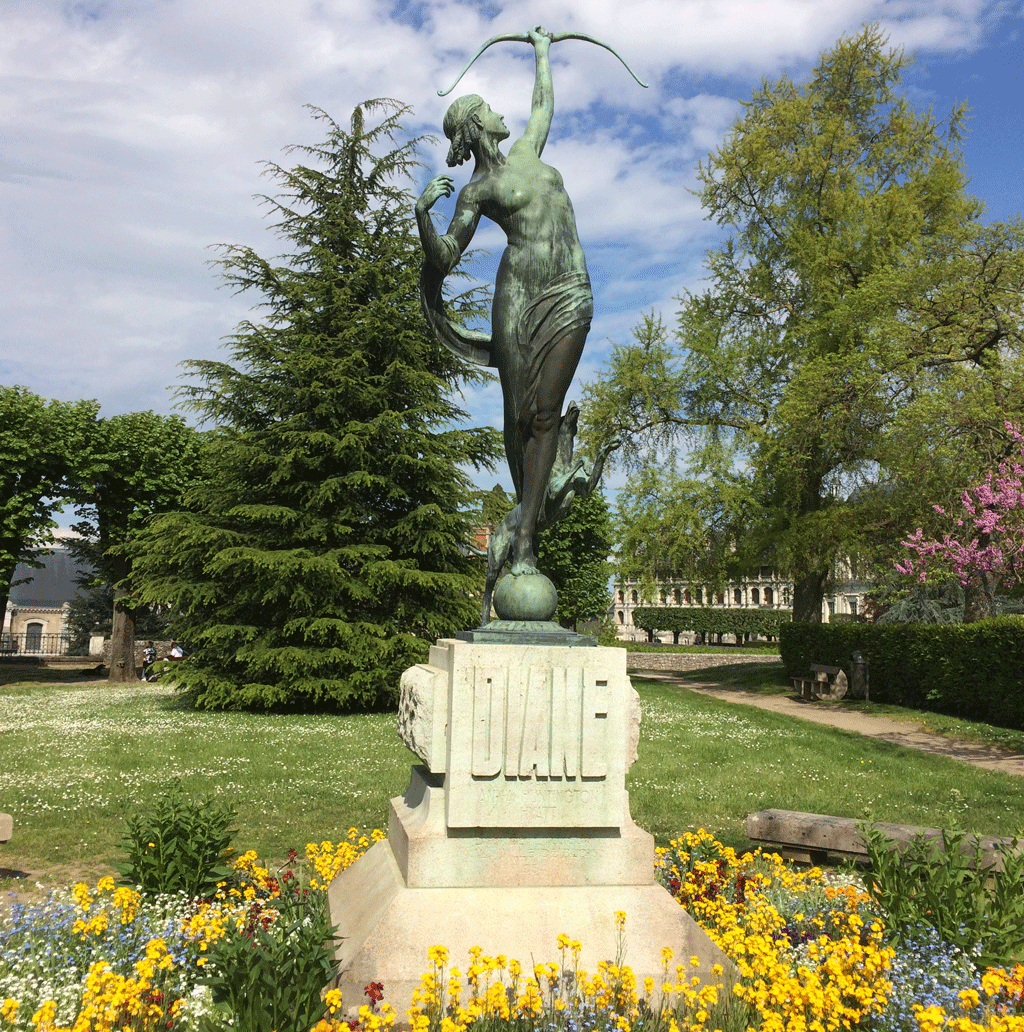 Diane of the Chase
Diane of the ChaseBorn in Massachusetts in 1876, Anna Hyatt Huntington lived to the ripe old age of 97, and is one of American’s greatest 20th century sculptresses. She was very popular in France. A copy of her Joan of Arc was presented to Blois with great pomp by the patron of the arts, J. Sanford Saltus. It met with considerable success and Anna became famous. I’ll take you to see it a little later on. It’s in the Bishop’s Garden.
Anna had such good memories of France that Hubert Fillay, president of the Ecole de la Loire Academy of Art, learnt in 1933 that she wanted to donate a statue of Diane to the city of Blois. The 2.5 metre high statue, which is stunningly beautiful from whichever angle you look at it, was eagerly accepted. Anna Hyatt even paid the 1,000 dollars needed to erect it. “I would be happy to find a place in the château’s beautiful historical gardens”. And so are we!
If you look over to your left after going past Diane, you’ll see a very pointed slate roof atop a little brick and stone pavilion. With the Orangery, which you can also see, the Anne de Bretagne pavilion is the last trace of the royal gardens of Blois Castle. Built in the “lower gardens” it is a unique example of early 16th century construction. Despite the presence of a private chapel, it was probably a royal pavilion with various purposes relating to the gardens – a place of meditation, a venue for private meetings, romantic trysts, etc. It is no longer open to the public but you can sometimes see inside when there is an exhibition.
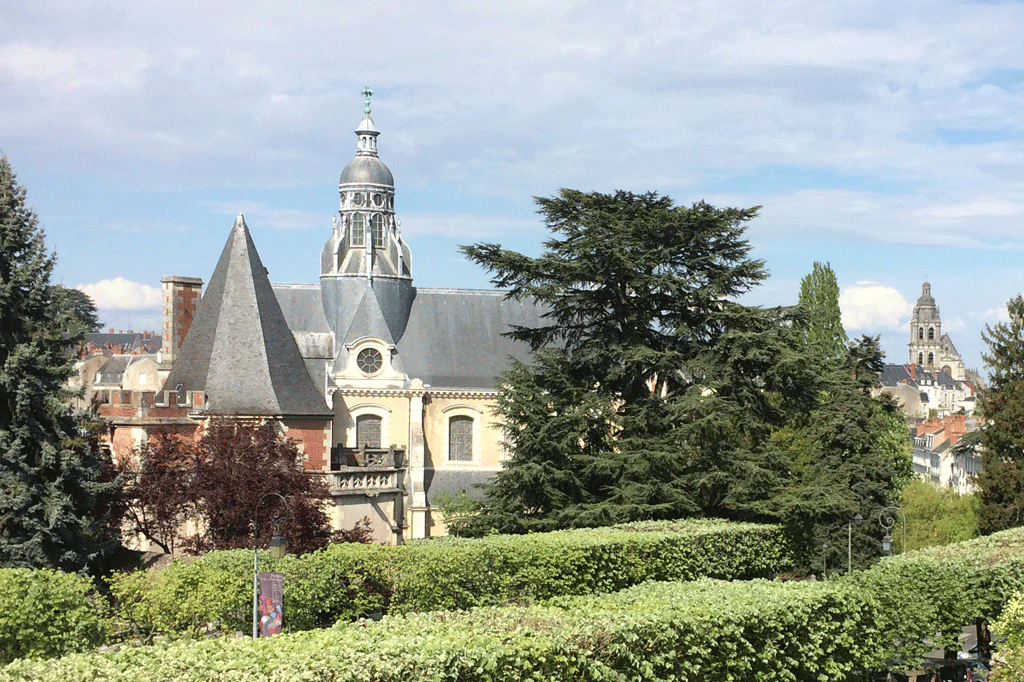 Anne de Bretagne pavilion on the left and Saint Vincent de Paul’s church in the middle
Anne de Bretagne pavilion on the left and Saint Vincent de Paul’s church in the middleFrom the end of the garden, you have one of the best views of the rear façade of the castle. The Royal Castle of Blois is a real mixture. It consists of four castles comprising four different eras and four architectural styles around the same courtyard: 18th century gothic; flamboyant gothic and introduction of the Renaissance; 16th century Renaissance with François I, the Renaissance superstar, and the classical architecture of the 17th century. This is the Renaissance façade with its Italianate galleries.
On the left, is the beautiful church of Saint Vincent de Paul. It was built between 1625 and 1660 on the site of an old chapel and is part of the Catholic Counter-Reform movement in Europe. Construction progressed slowly until Gaston d’Orléans stepped in. His initials, like those of his daughter Anne-Marie, are inscribed on the façade. After falling into disuse during the French Revolution (which often happened to churches), it was used as a stable and fodder storage area before being rehabilitated in 1826 and restored between 1847 and 1877.
You can now walk to the right and down the steps until you are on the same level as the castle. In front of you is a grassy patch with a view of the Loire River and the 14th century church of Saint Nicolas on the left.
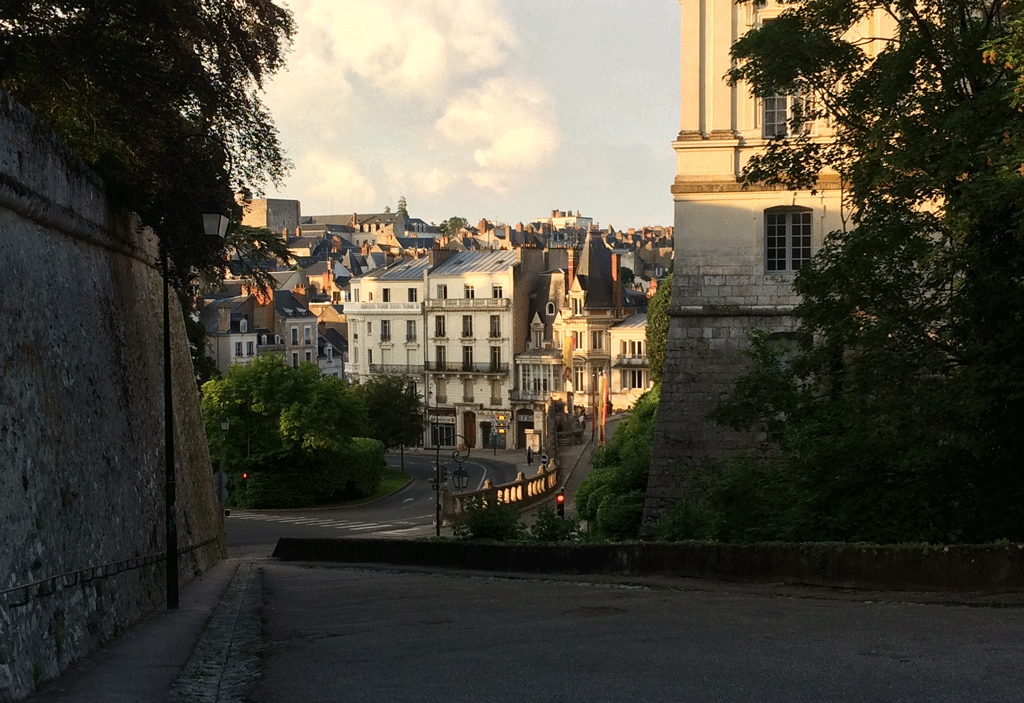 The road leading down to the castle
The road leading down to the castleWalk down the hill towards the castle and then up the ramp that runs along the Renaissance façade. You’ll see the tourist office down on your left and can get yourself a map of the town. Next door is a little restaurant called Les Forges du Château which has become very popular but is often full. What I like best about it is the 15th century wine cellar downstairs on the right has you enter. It has dust-covered vintage bottles behind iron grids and is worth a visit in itself! You can buy some of the local Touraine, Cheverny and Cour Cheverny as well.
Now walk up the stairs to the Place du Château. I will let you visit the inside of the castle on your own (you can refer to http://www.aussieinfrance.com/2012/04/easter-sunday-in-blois/ and the official documentation for more information) but I’d like to point out a couple of interesting features outside.
The hexagon and compass rose, in the middle of the court of honour will be helpful in understanding the different parts of the castle. Clockwise from left bottom: TERRACE – Panorama and tower 13th century; GASTON D’ORLEANS 17th century; FRANCOIS I 16th century; STATE ROOM 13th century; LOUIS XII late 15th century; CHAPEL late 15th century.
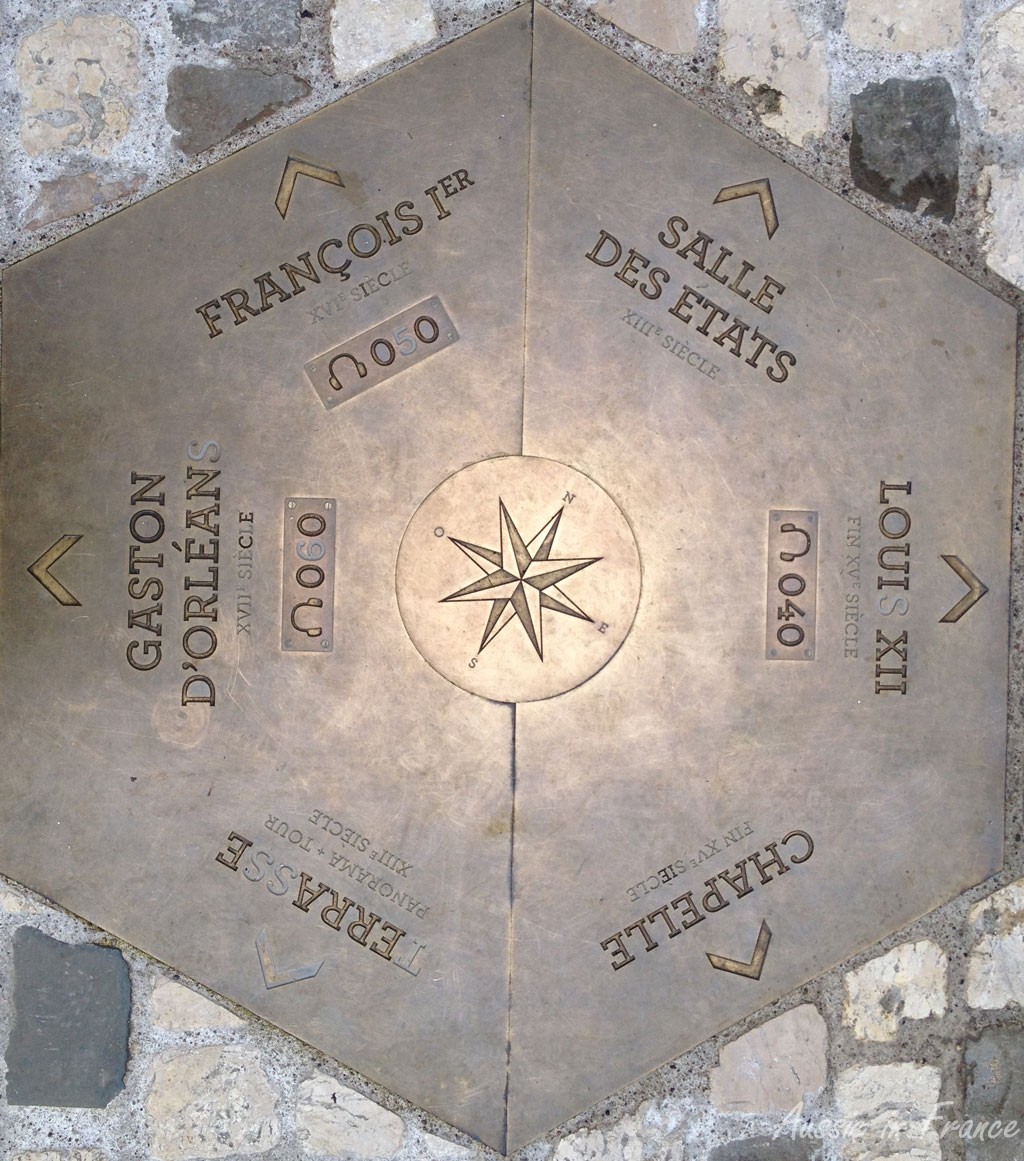 Hexagon in the castle courtyard
Hexagon in the castle courtyardNow follow the direction of the SALLE DES ETATS and look up at the window on the brick wall to the left of the staircase entrance. You’ll see two little figures called cul-de-lampe.
Sculptors of public and religious buildings often used local dignitaries as models for faces, sometimes rather humouristically. The face on the right is easily recognizable to locals as Jack Lang who was the mayor of Blois from 1989 to 2000. The rest of the body has not been changed. Jack Lang was also the French minister of culture from 1981 to 1991 and is known by many people as being the founder of the “Fête de la Musique“, the very popular music festival held in France on the summer solstice every year around 20/21 June. Jack Lang’s face appeared during restoration of the castle in the 1990s opposite another local figure Martine Tissier de Mallerais.
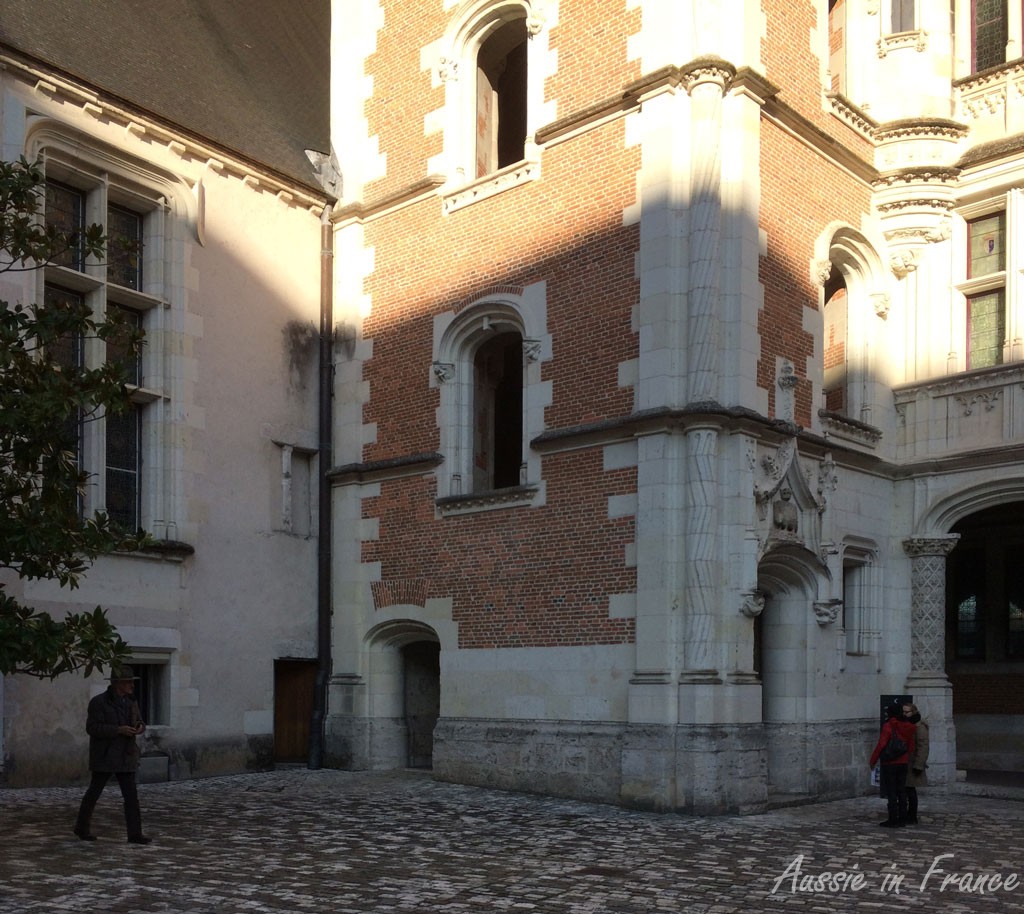 Tower with Jack Lang’s cul-de-lampe on the first floor window in the middle of the photo
Tower with Jack Lang’s cul-de-lampe on the first floor window in the middle of the photoMadame Tissier de Mallerais became curator of Blois Castle in 1967 at the age of 27, a post at which she excelled up until 1991 when she succumbed to Jack Lang’s determination to change the main cultural officers after his election in 1989. Finding themselves opposite each other on the façade of the castle must have been somewhat of a shock.
Now go in the direction of the chapel and, leaving it on your left, walk through to the round Tour du Foix, which is a vestige of the 13th century feudal fortifications. It offers a panorama of the city of Blois, the Loire River and the church of Saint Nicolas. In the middle ages, the tower defended the south-west corner of the castle and the Porte du Foix entrance at the foot of the rocky spur.
Note the fat squat looking animal near the tower. I’ll point out a similar one a little further on.
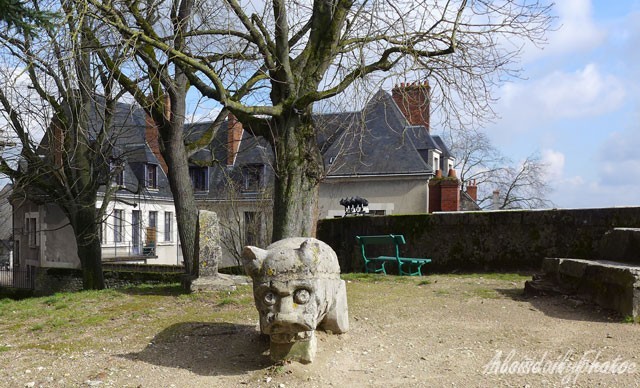 Mysterious animal near Tour de Foix
Mysterious animal near Tour de FoixWhen you leave château you might feel like an ice-cream. The Marignan on the left is practically the only place in Blois where you can find an after-dinner take-away ice-cream – but only from May to September and not too late! During the day there are several vendors in the streets off Place Louis XII.
Opposite the castle is La Maison de la Magie or House of Magic Museum in honour of Jean-Eugène Robert-Houdin, the famous French illusionist born in Blois in 1805. “Was he Houdini?”, I can hear you say. Houdin had a theatre in the Palais Royal in Paris where he was highly successful. However, it was a man called Ehrich Weiss born in Budapest 1874 who took the pseudonym of Harry Houdini after emigrating to the United States at an early age and became one of the leading magicians in the world.
Before descending the steps to the right of the House of Magic, walk to the edge of the terrace and up the stone steps to get a magical view of Blois with the cathedral in the distance. Below is Place de la Vaissière where the excellent Saturday morning market is held.
Follow the path down through an archway to the steps. On the left, almost at the bottom, you’ll see another archway with a blue door, once a chapel. Dedicated to the hermit Saint Calais, the Chapel, consecrated in 1508, was the private place of worship for Louis XII and Anne of Brittany. The nave was demolished in 1635 during the construction of the Gaston d’Orléans wing of Blois Castle. The painted vaults and tiled flooring date from 1869. The present-day stained glass windows by Max Ingrand, dated 1957, replaced those destroyed during the bombings in 1944.
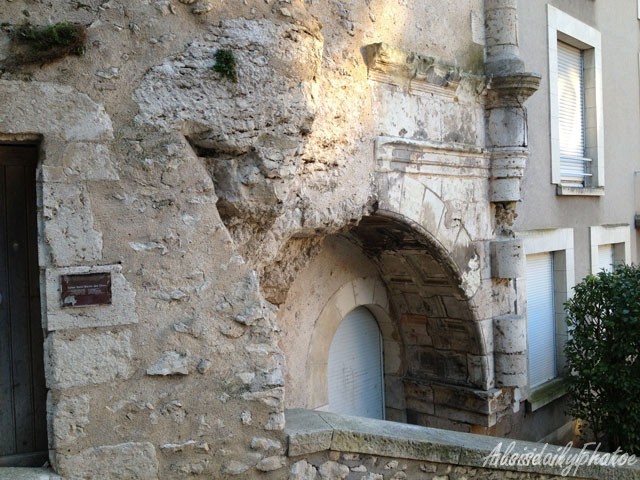 Saint Calais chapel
Saint Calais chapelIn front of you, at the bottom of the steps and if it’s not market day, you can see a swan pierced with an arrow on the pavement.
Called a cygne transpercé, this emblem was used by both Louise of Savoy and her daughter-in-law Claude of France. The symbolism is complicated and now poorly understood. It includes references to the white colour, meaning purity. Claude’s most commonly used emblem, the ermine, is also white. Louise often used wings because the word for wings, ailes, is pronounced like ‘L’, her initial. The meaning of the arrow is the most obscure part. It is probably linked to love, like Cupid’s arrows. When Louise uses it, it may refer to the loss of her husband. If this is the case then there is a link to the white colour of the swan, white being the royal colour of mourning. Louise sometimes used a swan emblem to refer to her daughter Marguerite too.
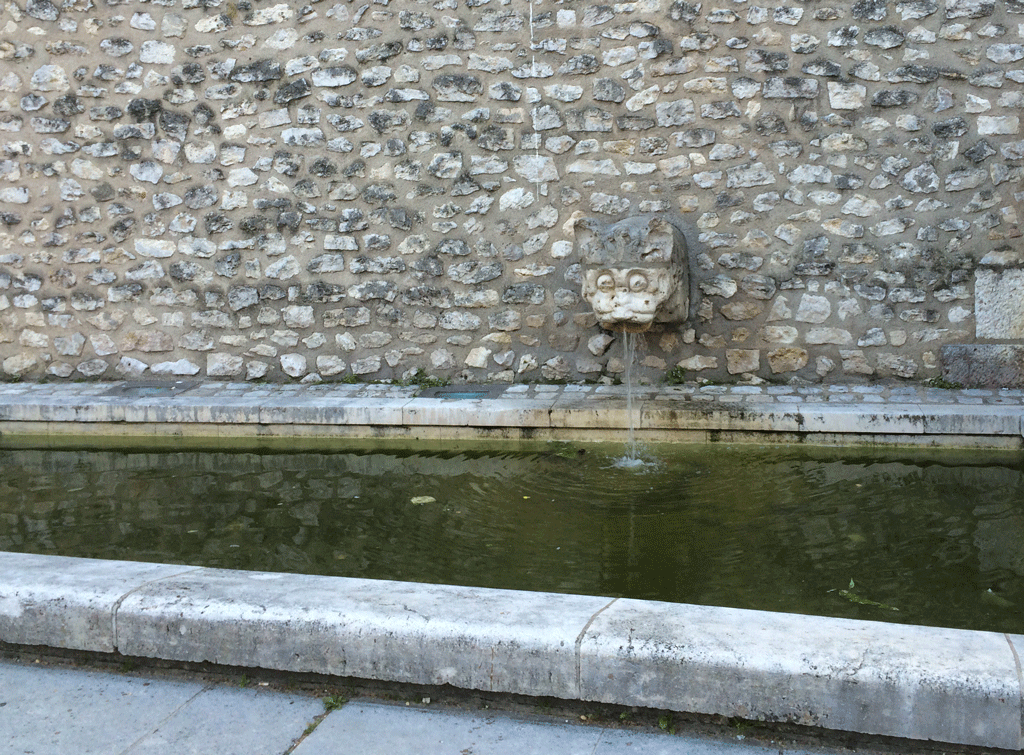 Saint Martin’s fountain
Saint Martin’s fountainOn the right, you’ll see Saint-Martin’s fountain, very similar to the squat fat animal near Tour de Foix. It has a crown while this one doesn’t. The name “Saint Martin” refers to a parish church built in the 13th century that has now disappeared. After the second world war bombings, the square was reconstructed and this fountain, consisting of an old gargoyle and a small pool, was designed.
There is another interesting fountain a little further on your left on one side of Place Louis XII. The Fontaine de l’Arsis des Comtes de Blois, known as the Louis XII fountain, was reconstructed in 1511 by the distinguished engineer Pierre de Valence. Up until the 19th century, it was located a little further away, on the corner of Saint Lubin and Bourgmoyen streets. However, when the houses behind it were destroyed to build the Louis XII square in 1820, it was transferred to the southern corner of the square which is why it looks a little out of place. After being damaged during the Revolution, it was restored in 1890. It is one of seven fountains in Blois, all supplied with water from the same reservoir, called a “gouffre” and located under Saint-Vincent’s.
If it’s market day (Saturday), I suggest you read my two posts describing our favourite vendors: http://www.aussieinfrance.com/2015/05/why-i-love-the-market-even-when-its-cold-or-rainy-1/ and http://www.aussieinfrance.com/2015/05/why-i-love-the-market-even-when-its-cold-or-rainy-2/.
By now you’re ready for a break anyway! If you are looking for lunch or coffee and cake, Douce Heure on the other side of the Place with its red awnings and chairs will probably do the trick, especially if you like hot chocolate! For lunch (but you will have to get there early!) you can join the local lunch crowd at Le Coup de Fourchette by walking left towards the river, then left again. They are my closest recommendations. You’ll find other suggestions at the end of each Secret Blois post.
Les Forges du Château, 21 Place du Château, 41000 Blois. Open 11 am to 10 pm from June to August, 11 am to 9 pm April to November and 11 am to 6 pm November to April. Closed on Wednesdays. 02 54 78 33 70.
Douce Heure, place Louis XII, 41000 Blois. Open all year round. 12 noon to 7 pm. Closed Sundays.
Le Coup de Fourchette, 15 Quai de la Saussaye, 41000 BLOIS, 02 54 55 00 24. Open Monday to Wednesday, lunchtime only and Thursday to Saturday, lunchtime and evening.
 I’m entering this post in Lou Messugo’s All About France montly link-up. For other entries click here.
I’m entering this post in Lou Messugo’s All About France montly link-up. For other entries click here.

